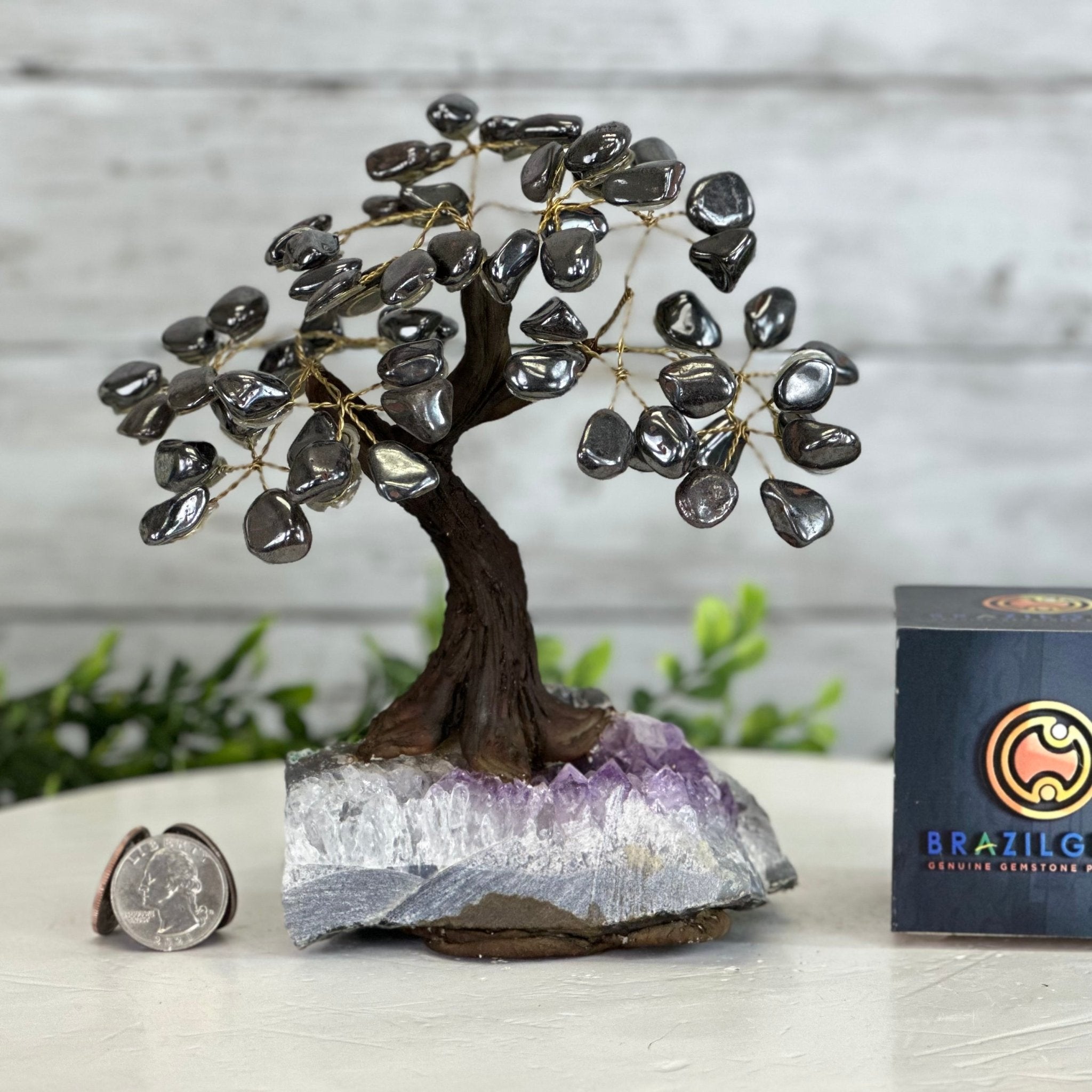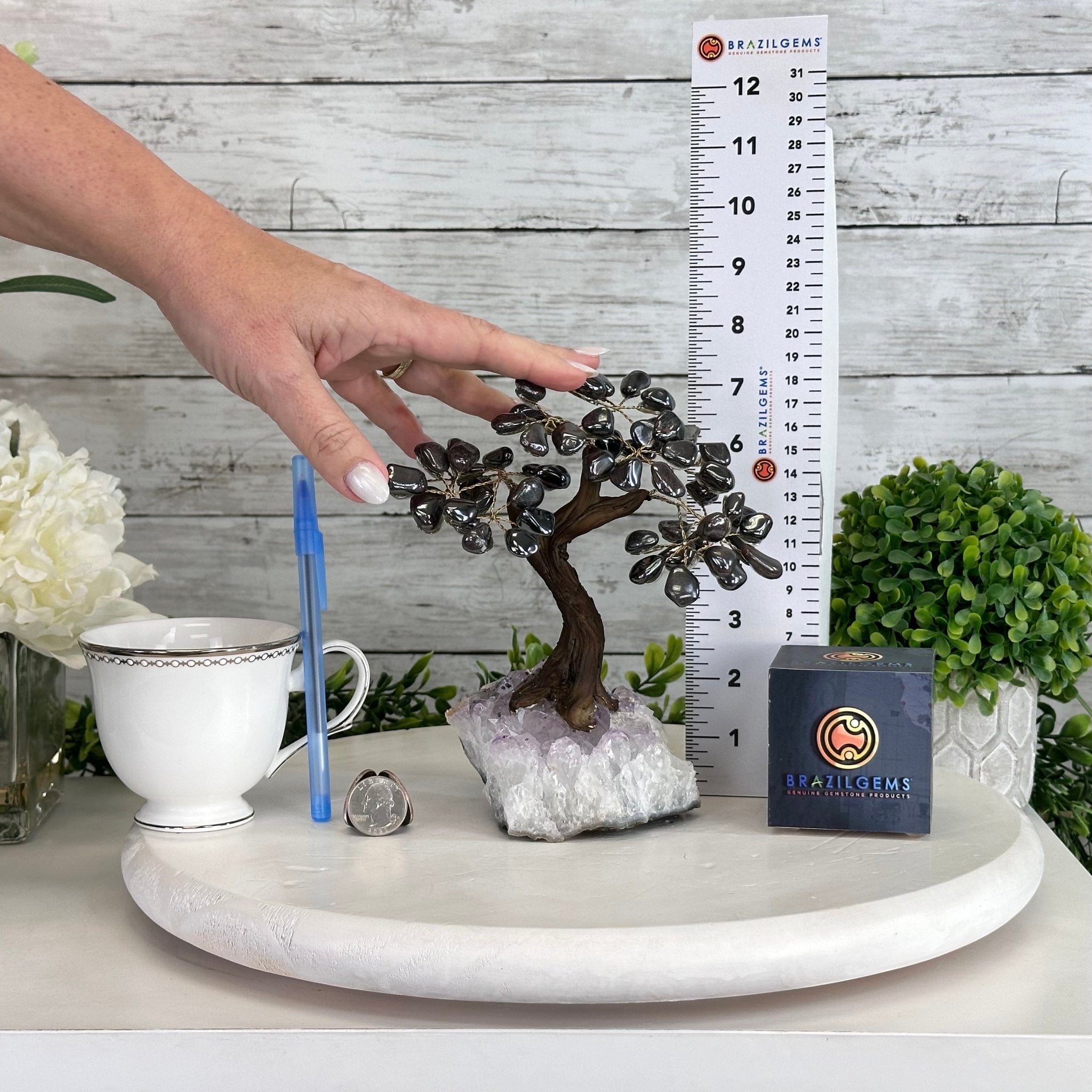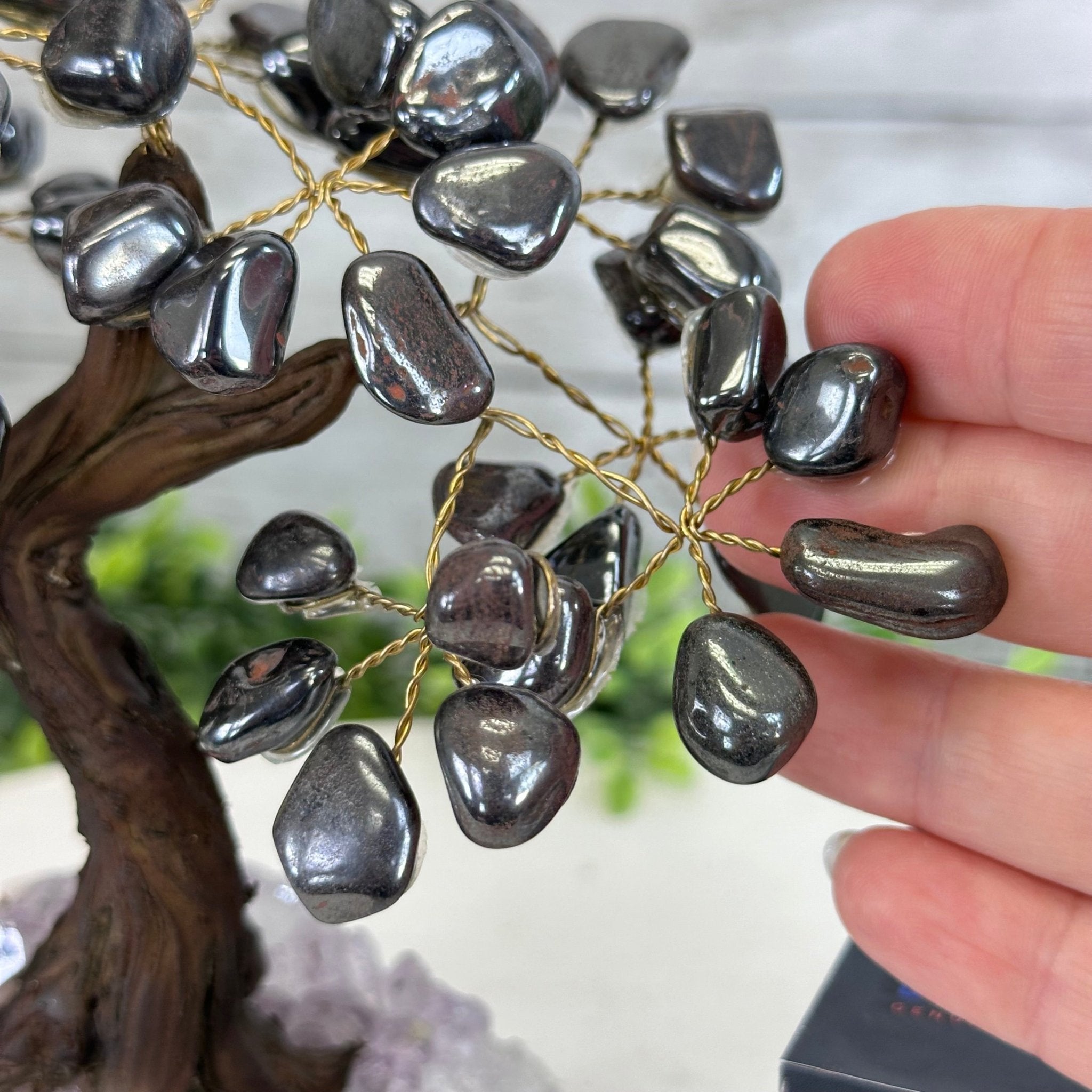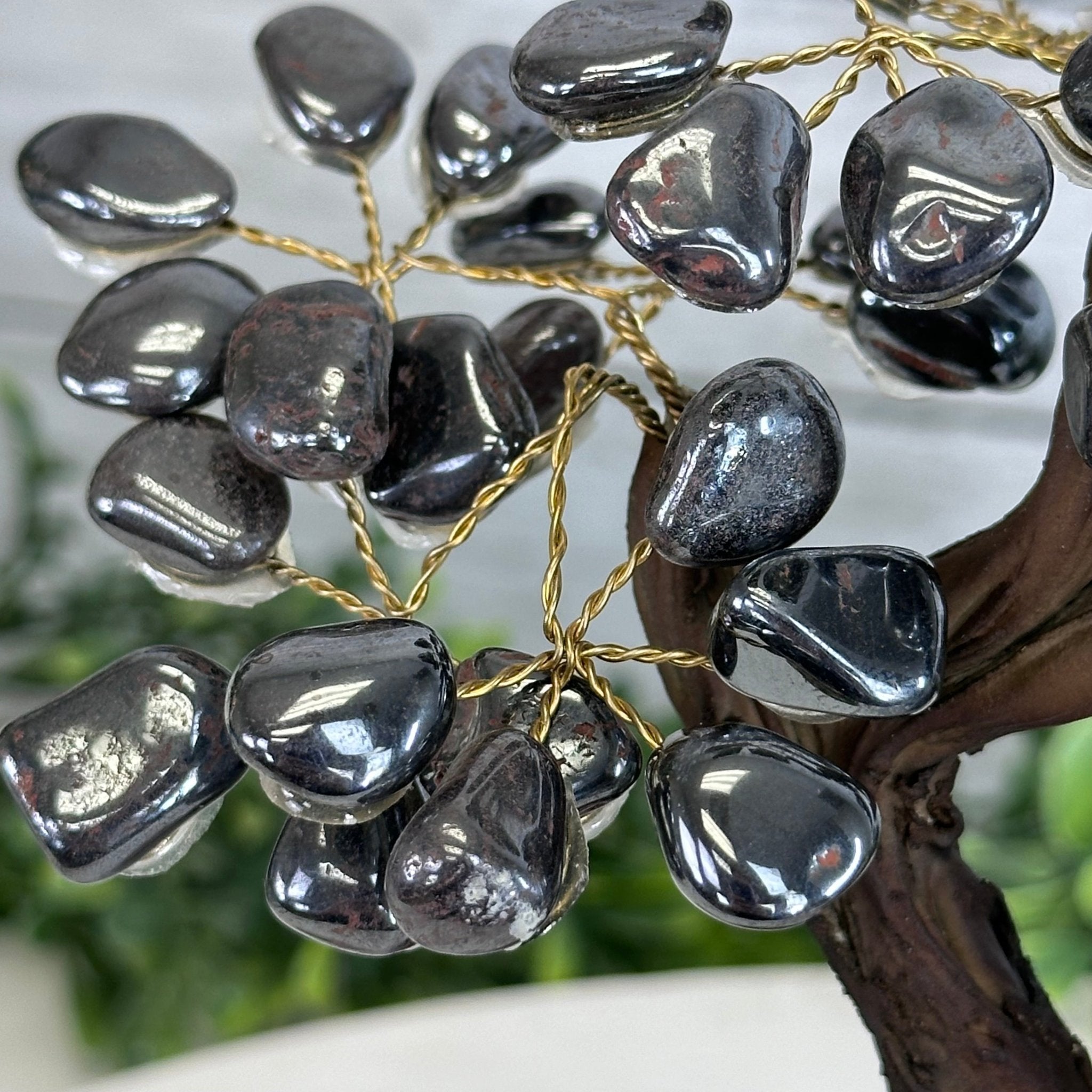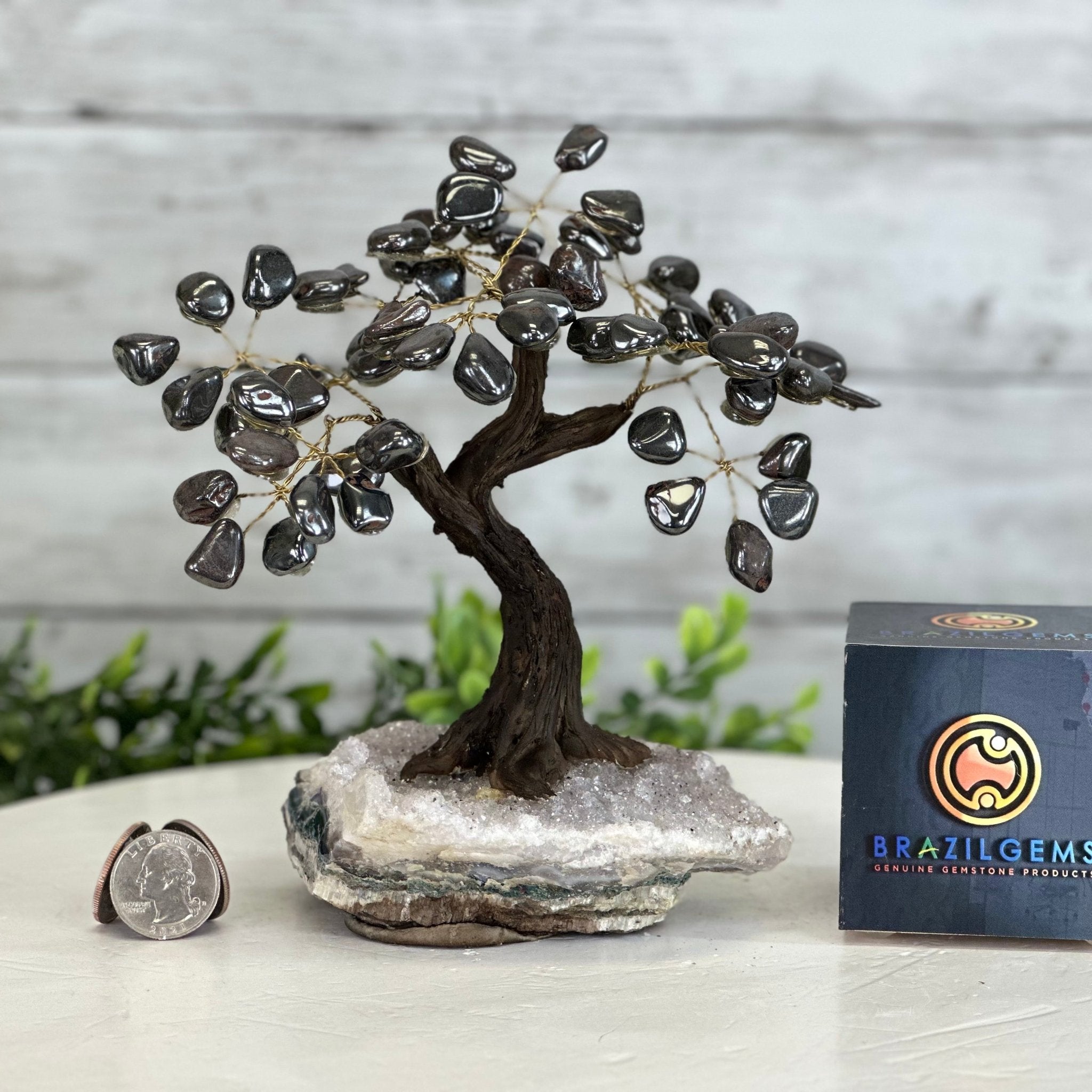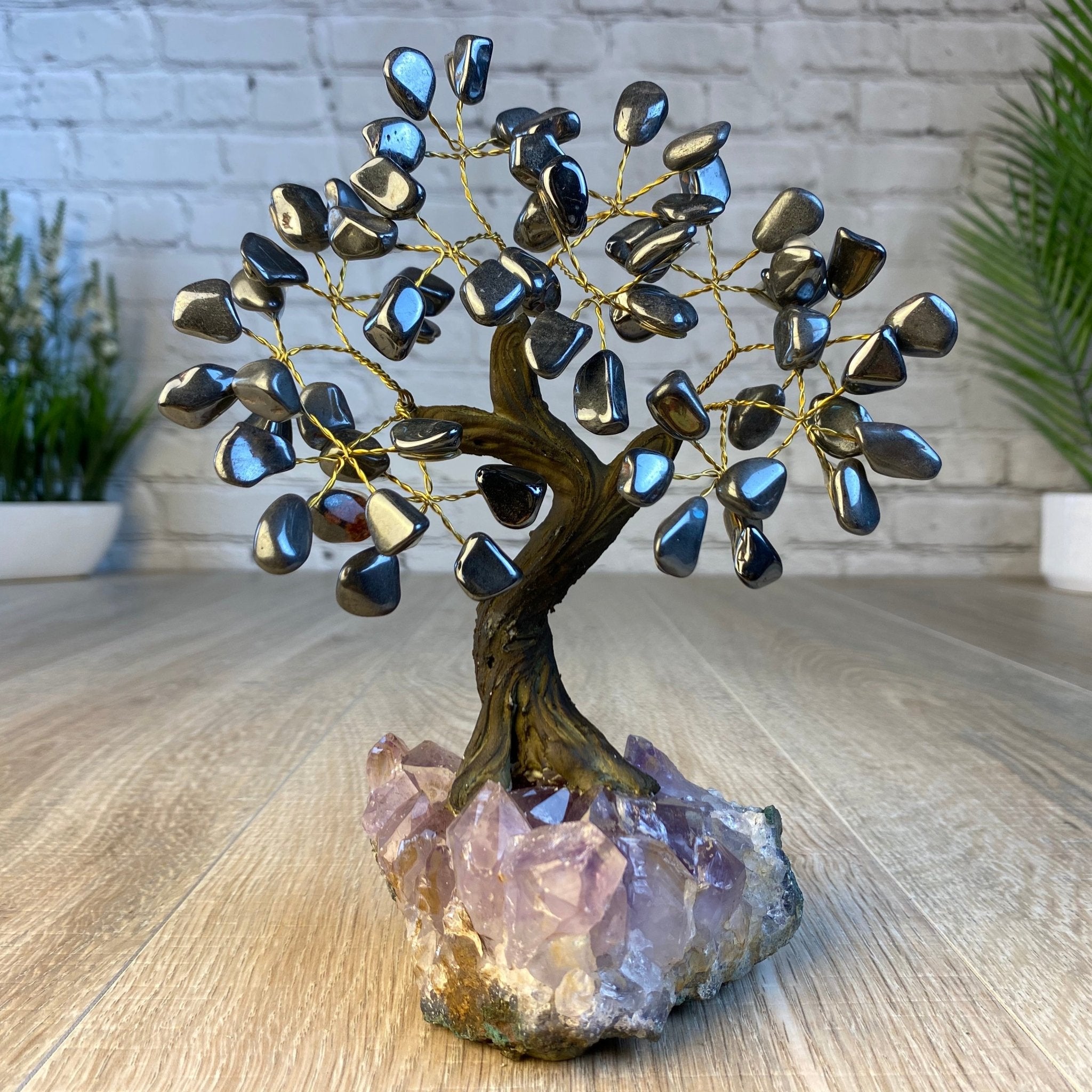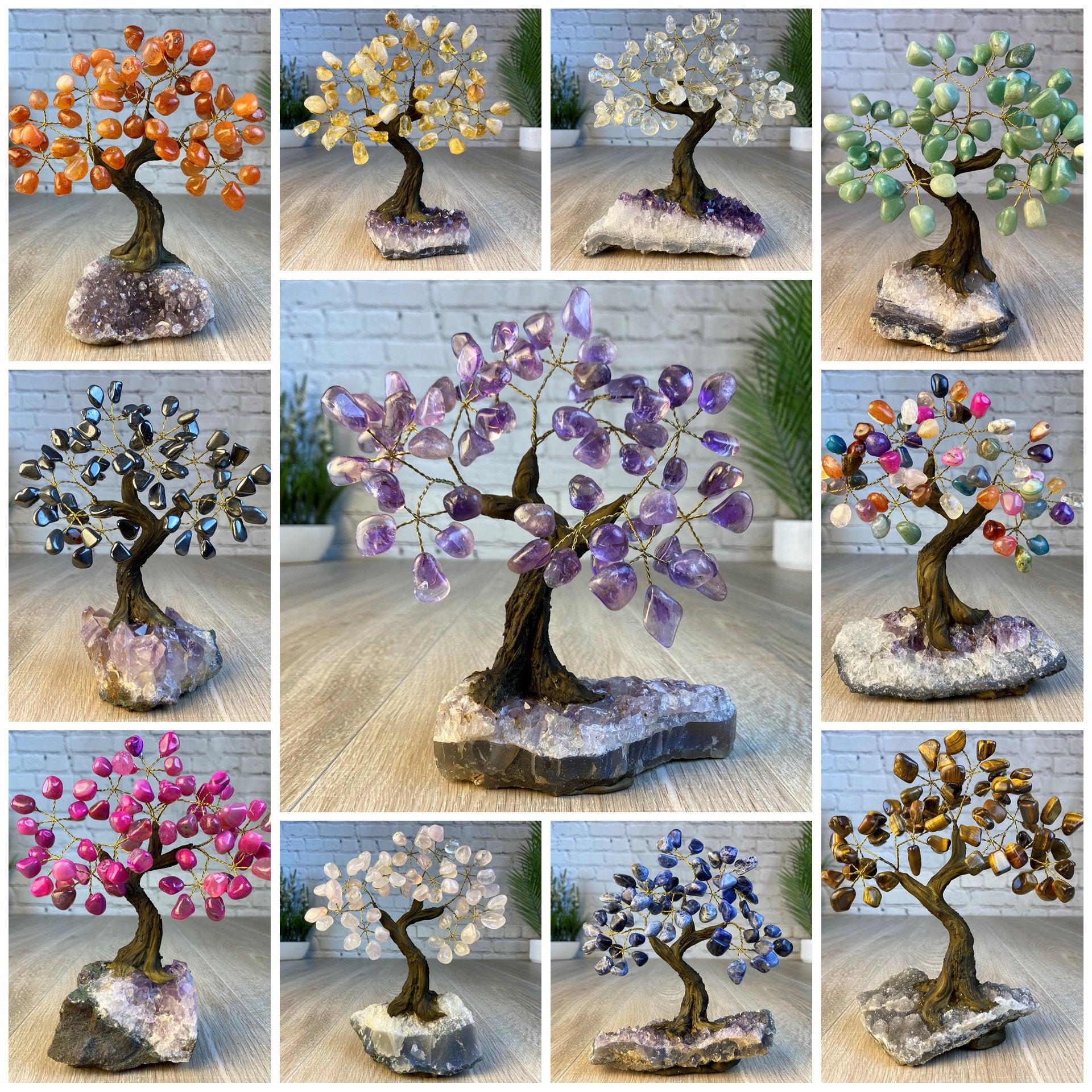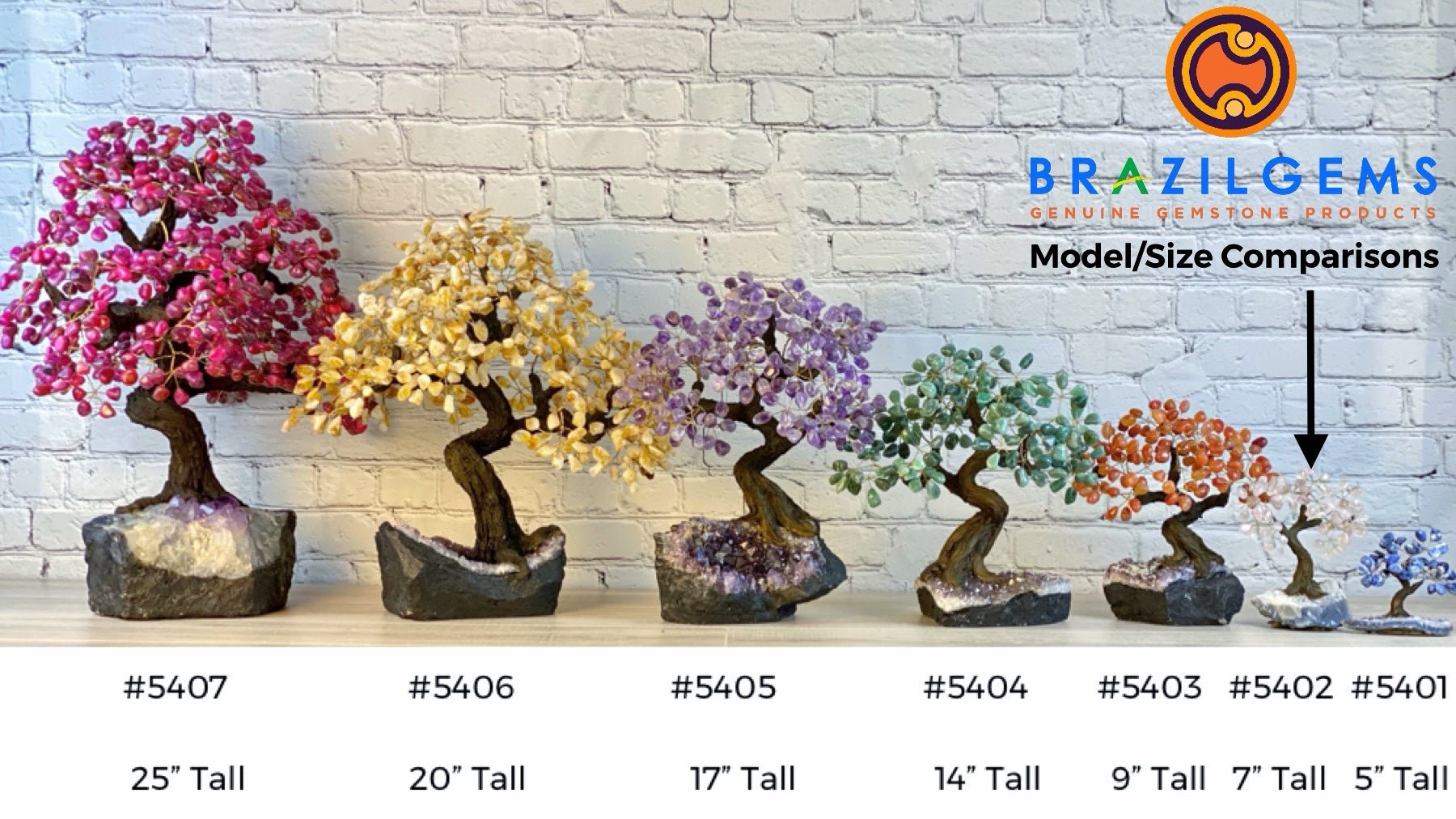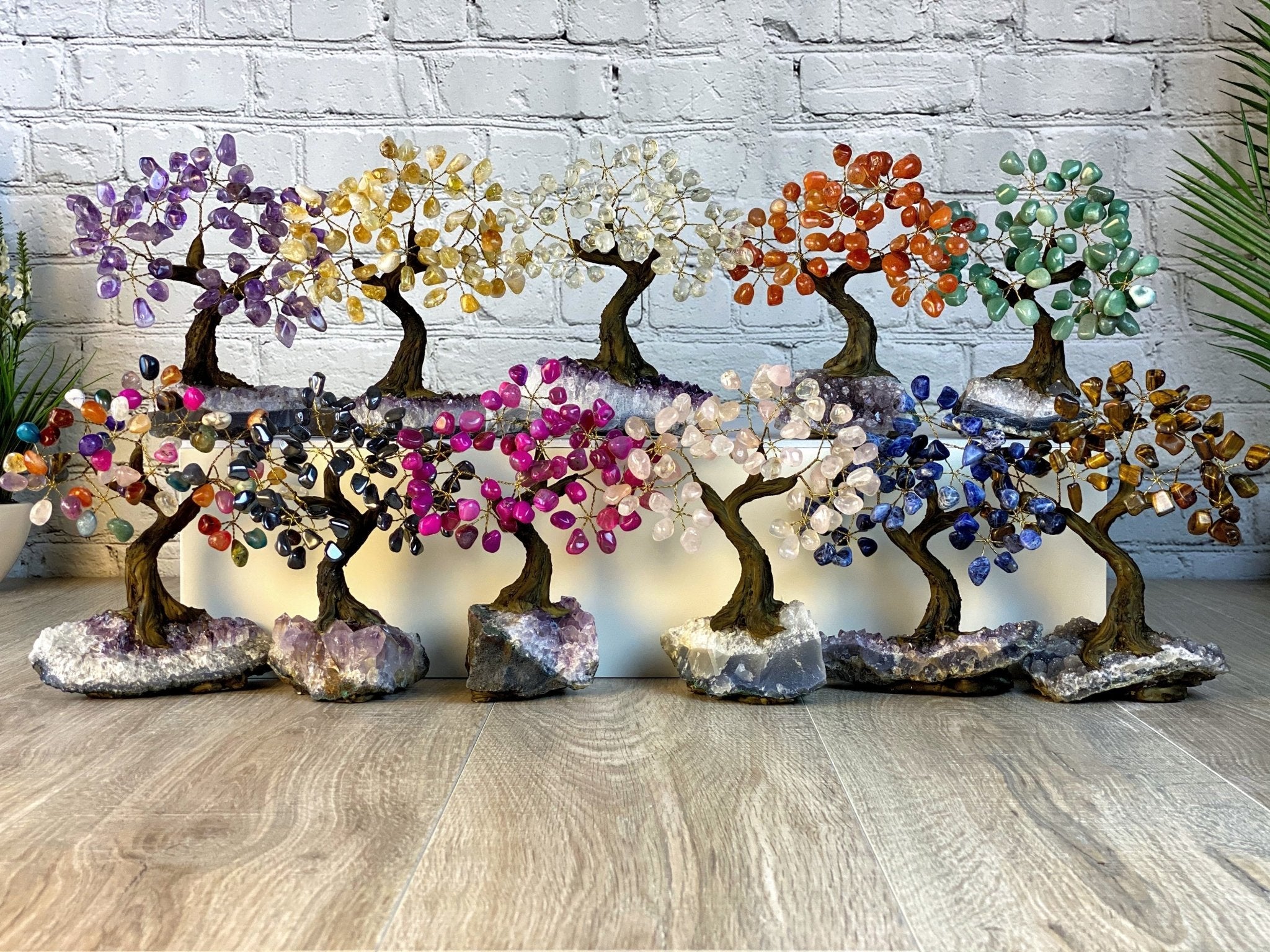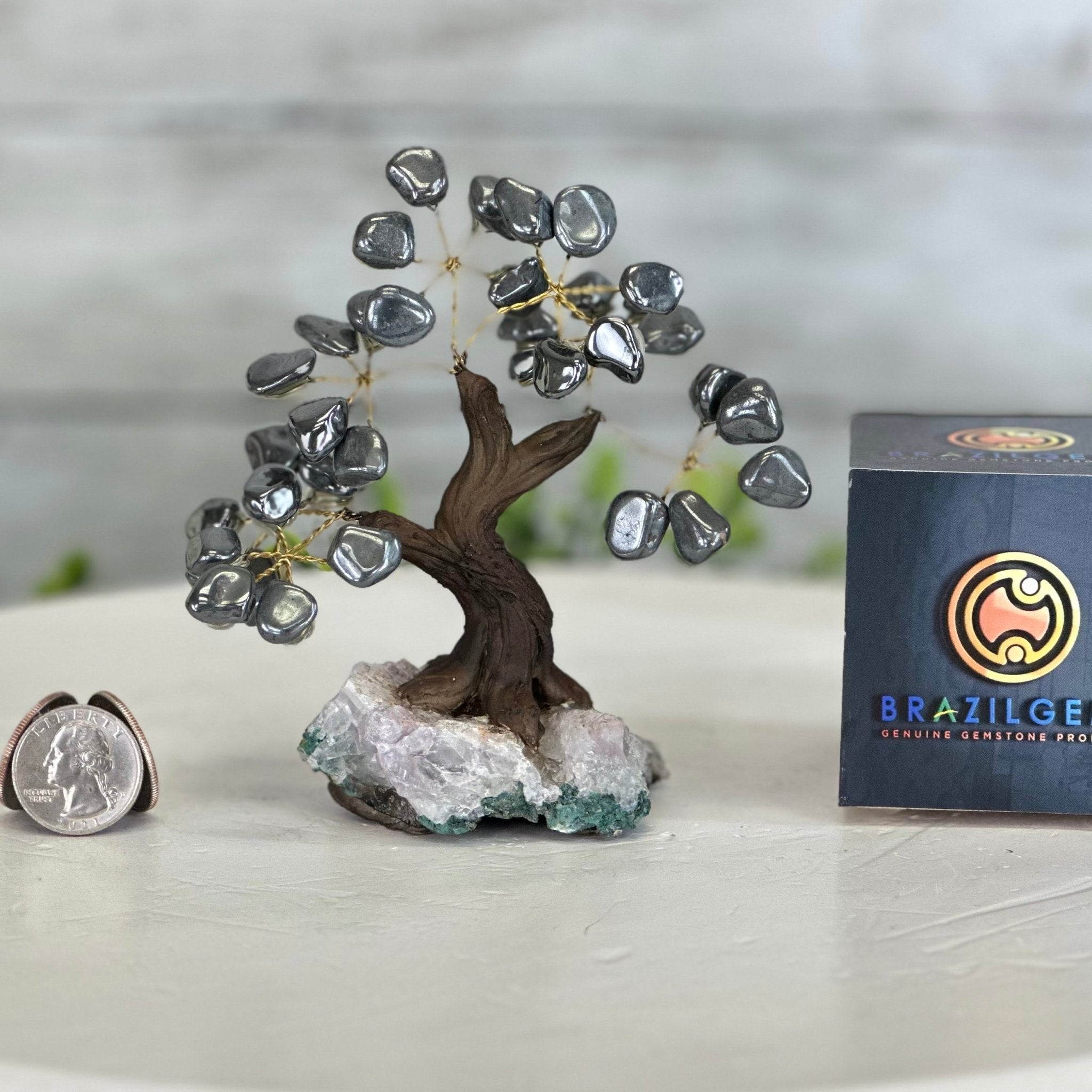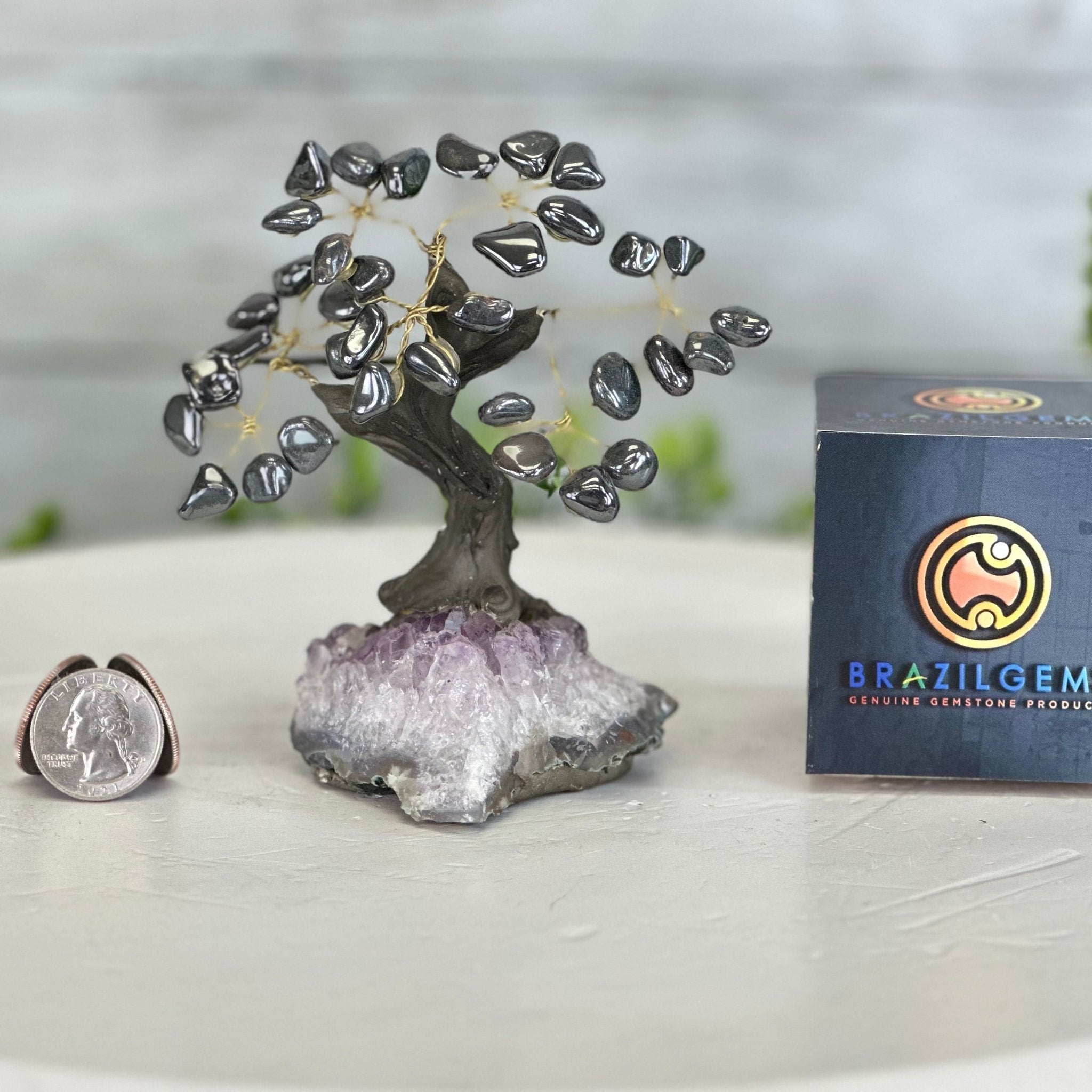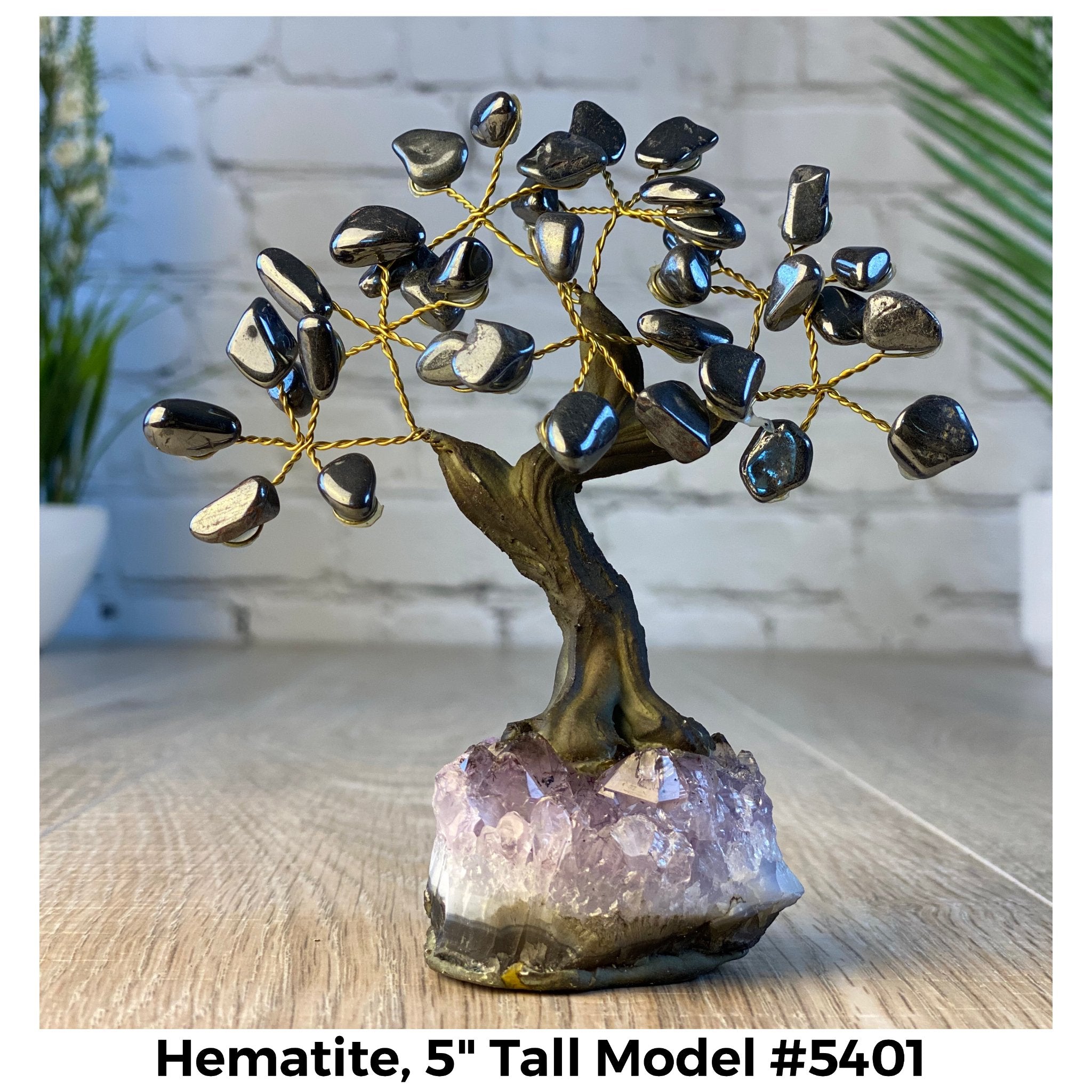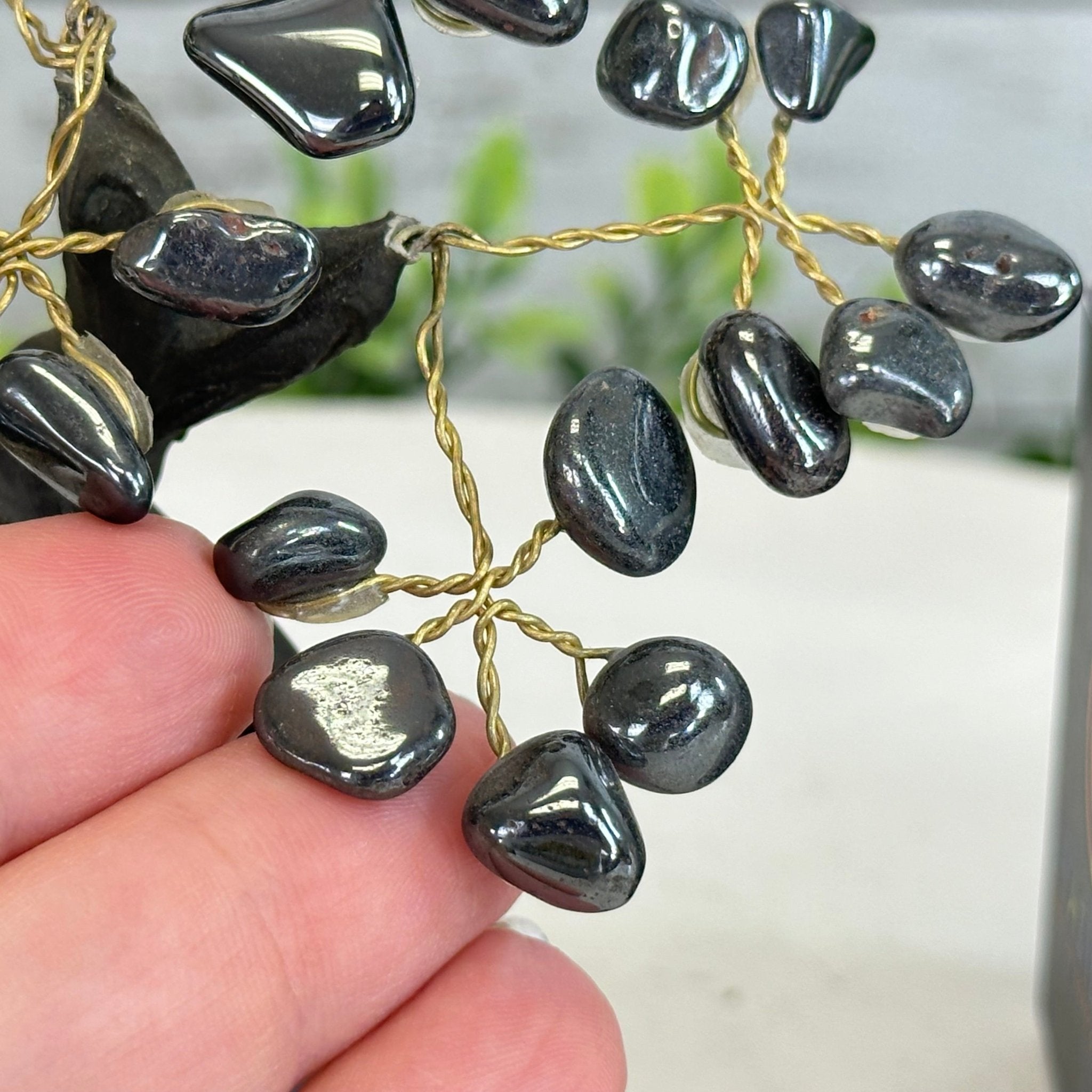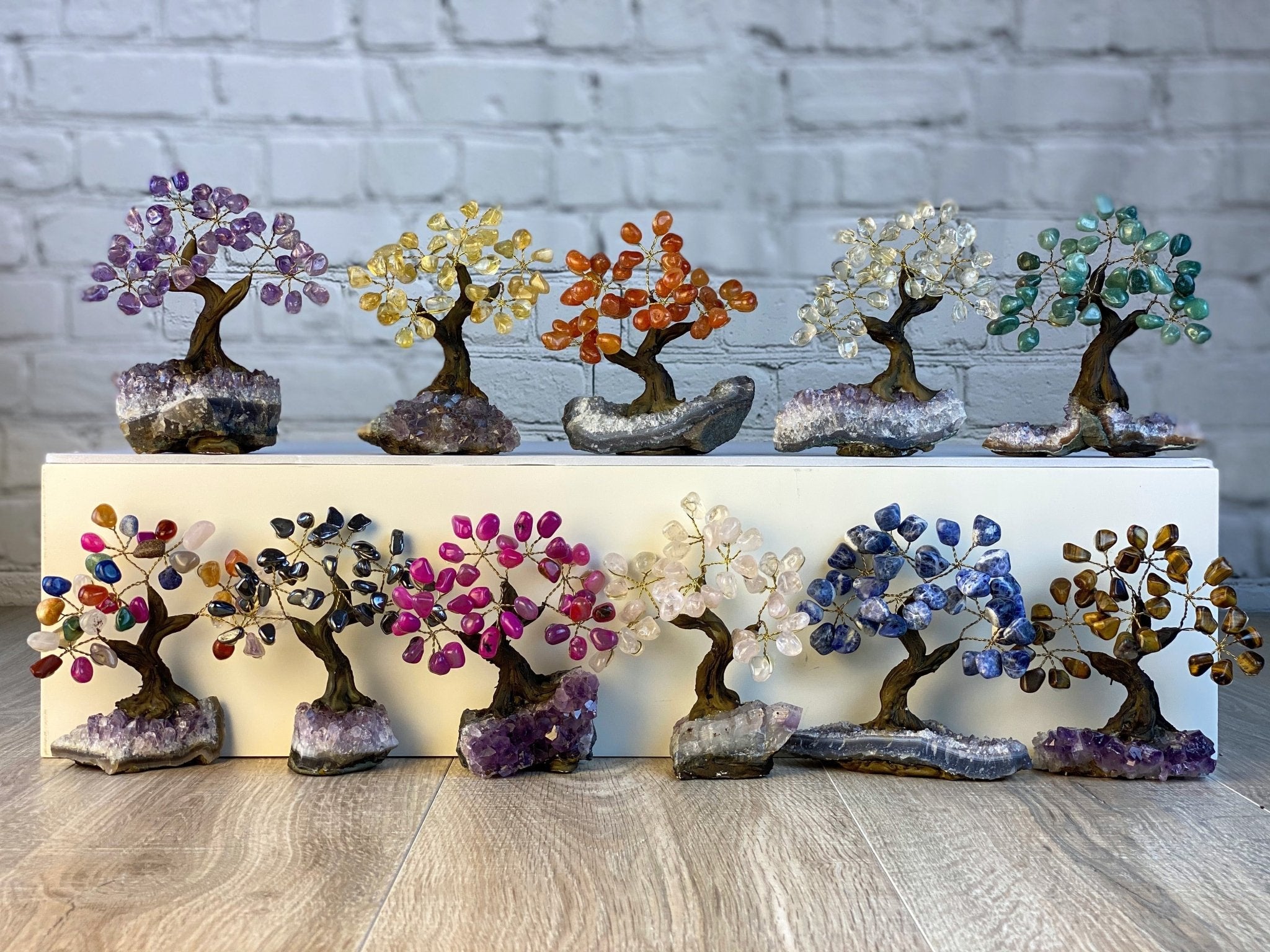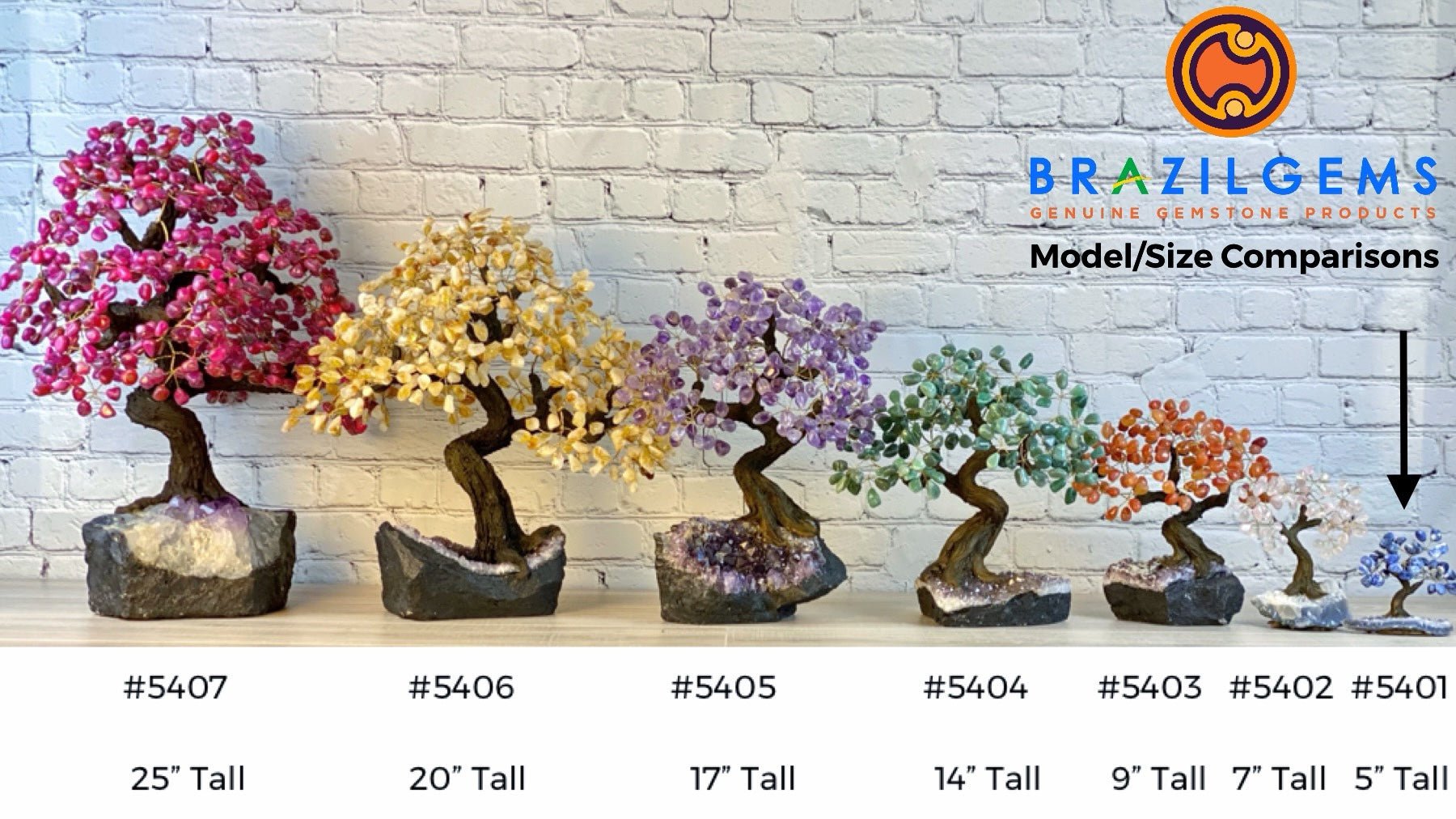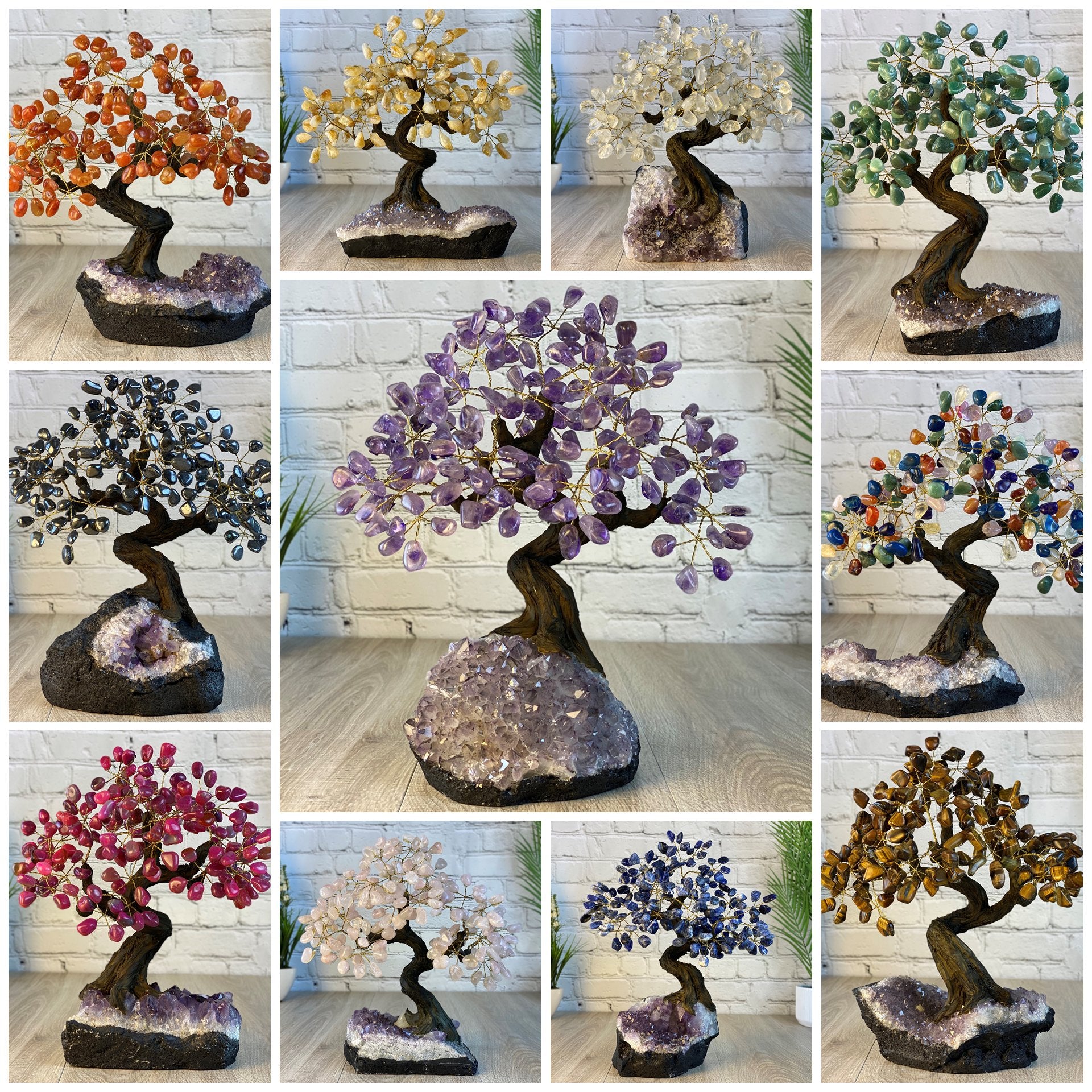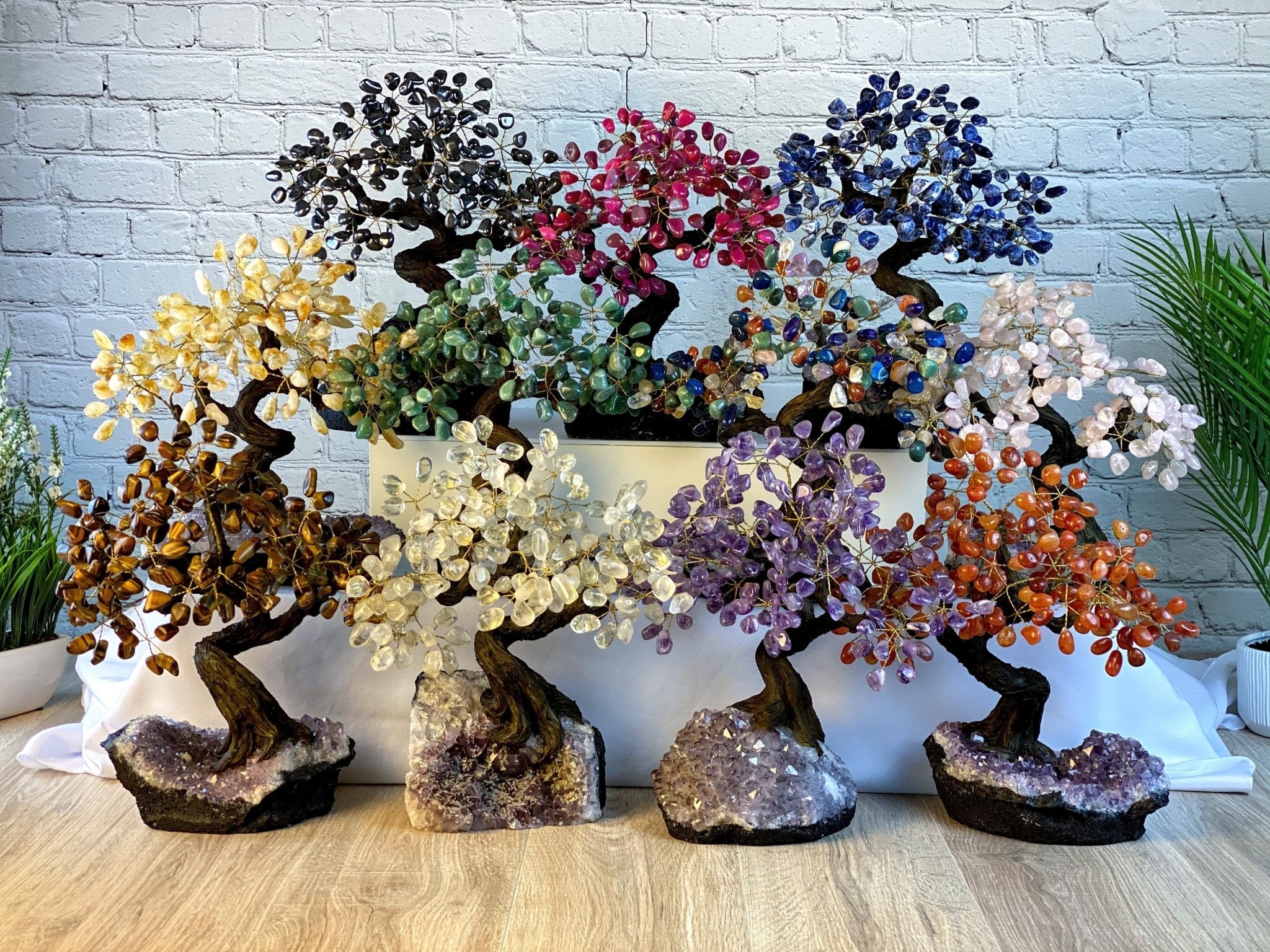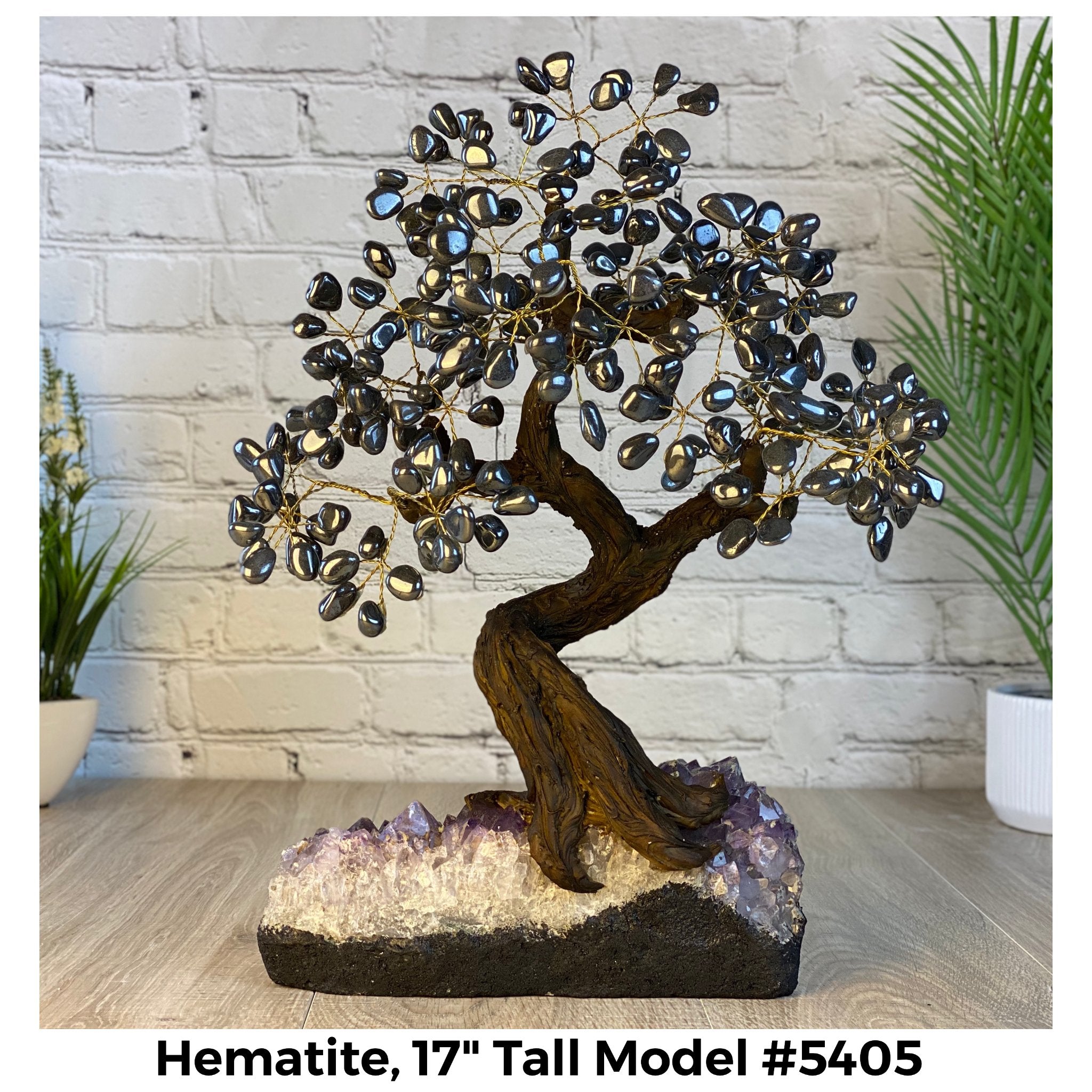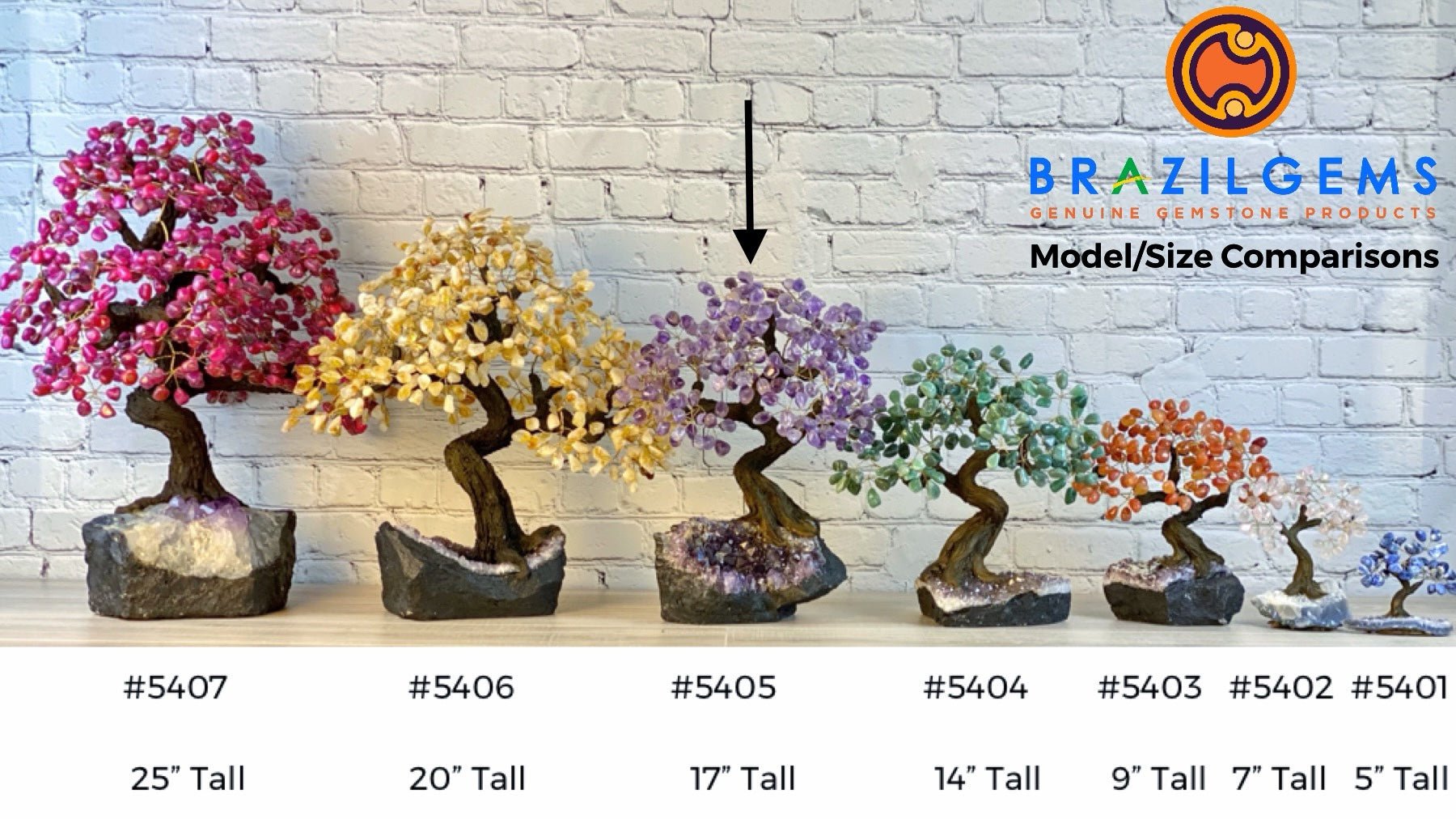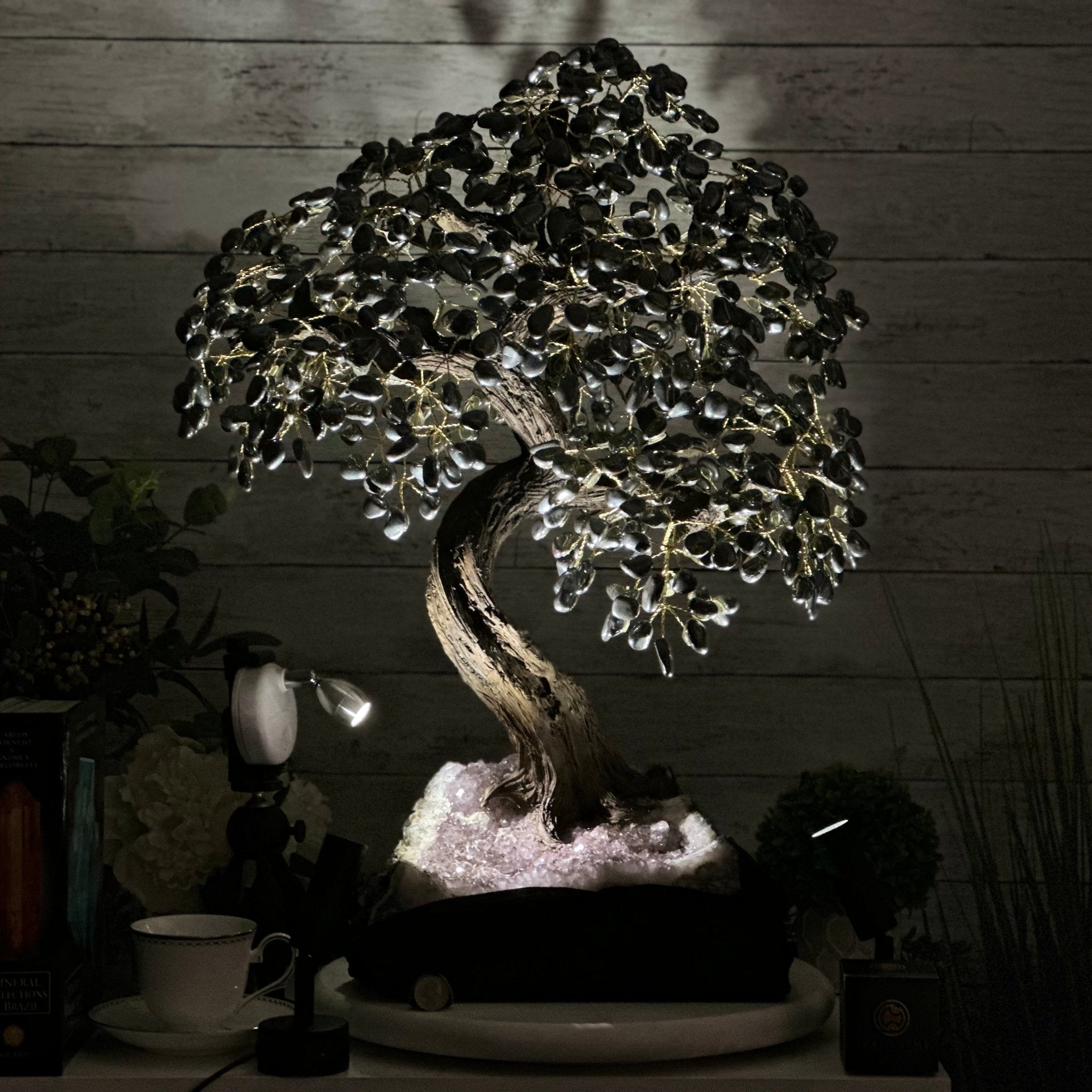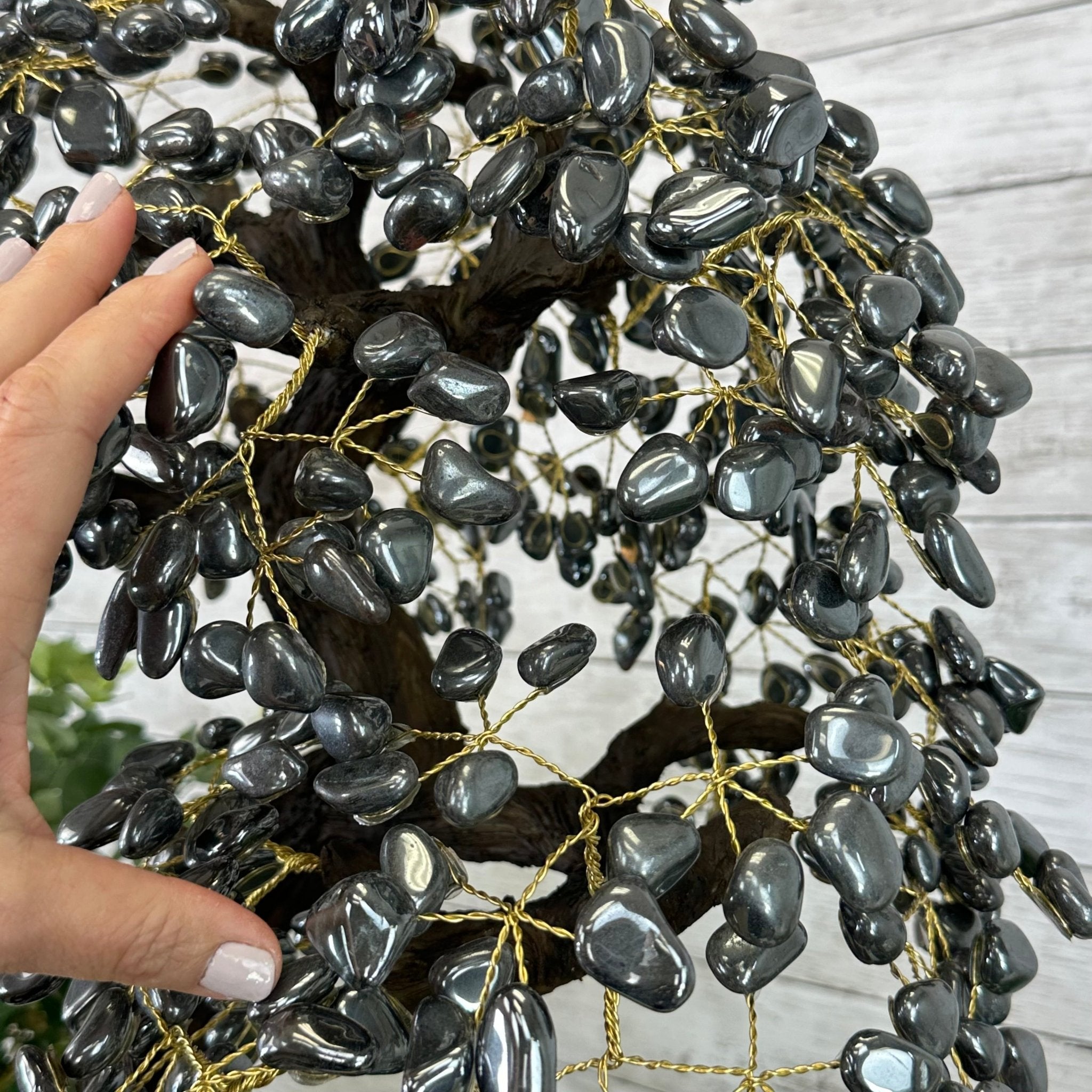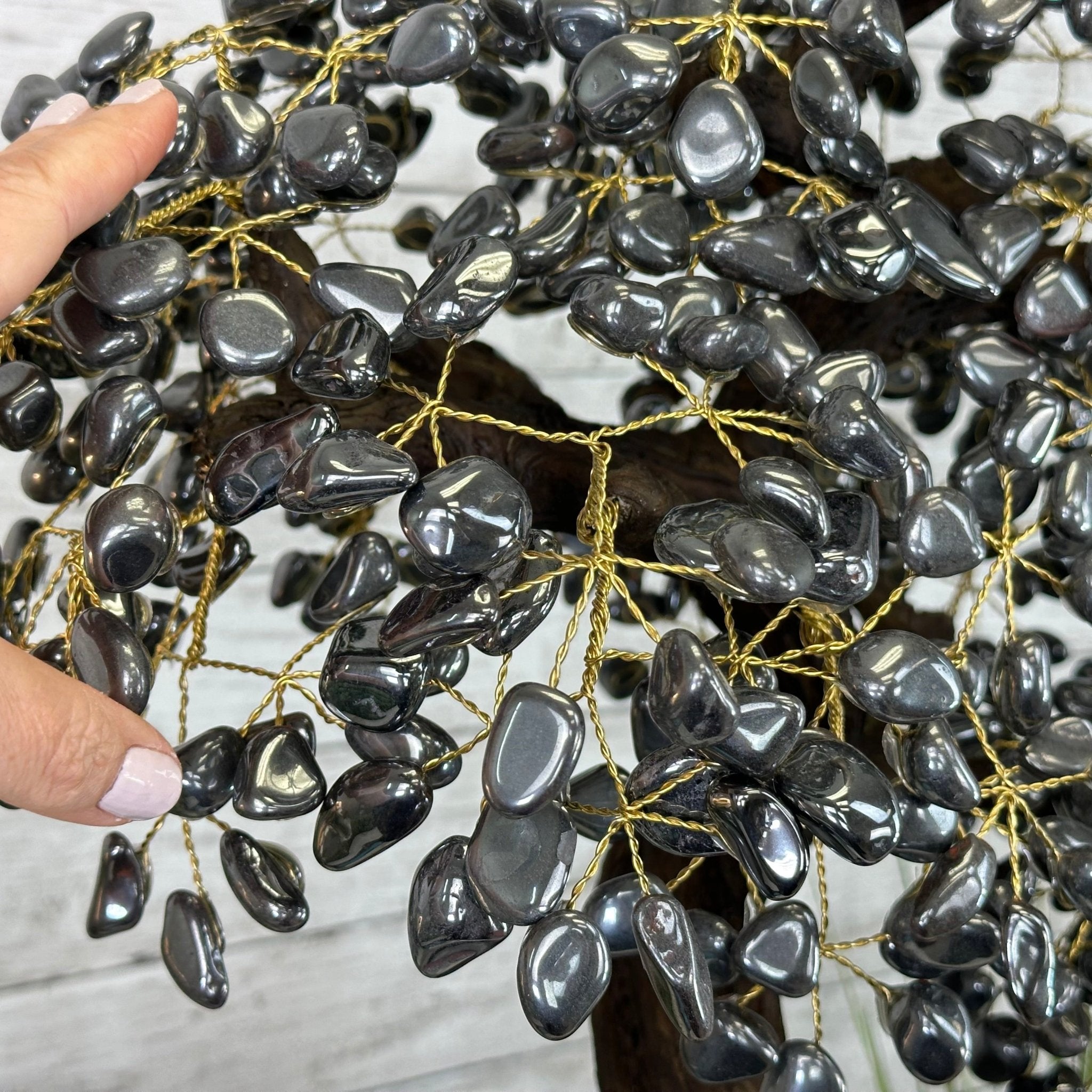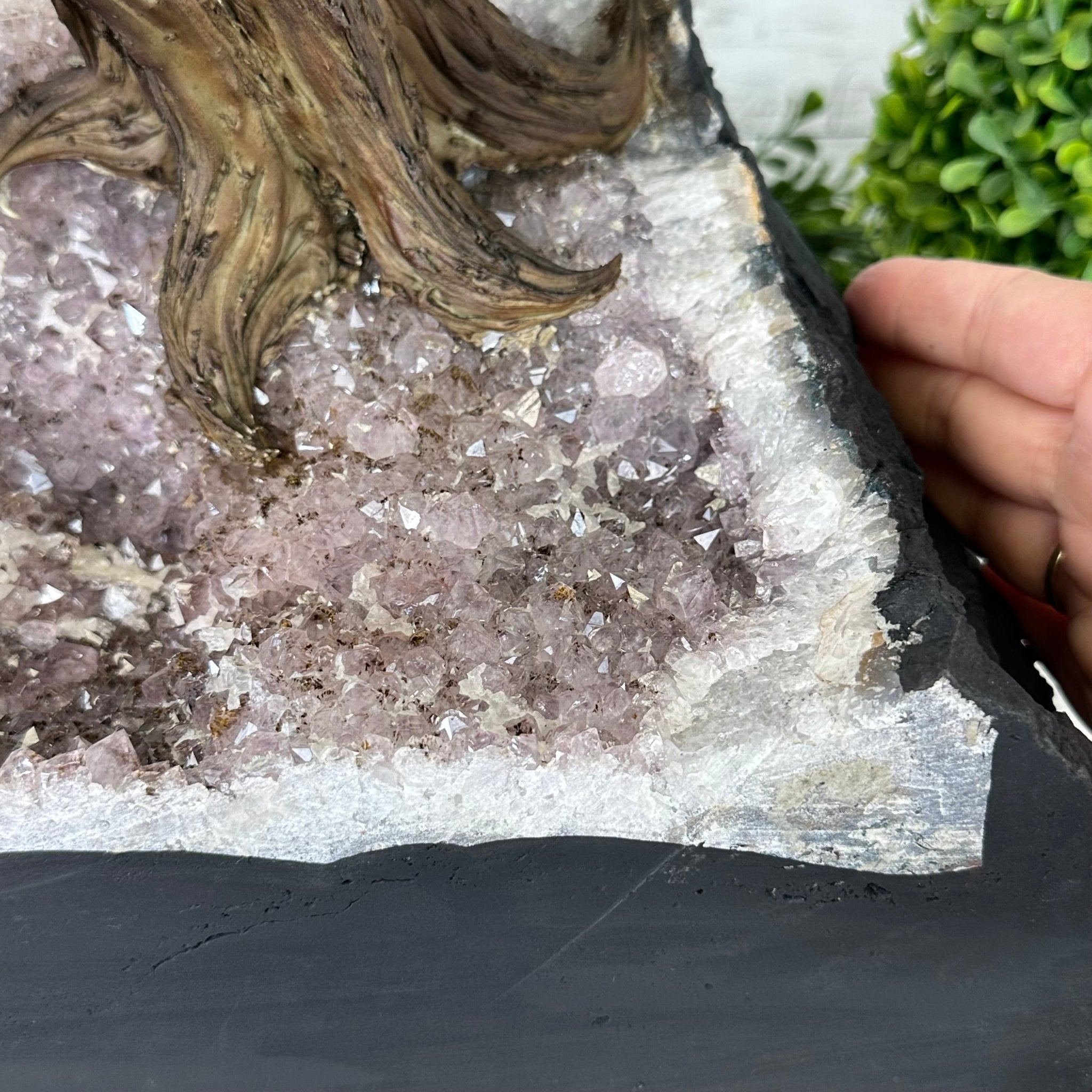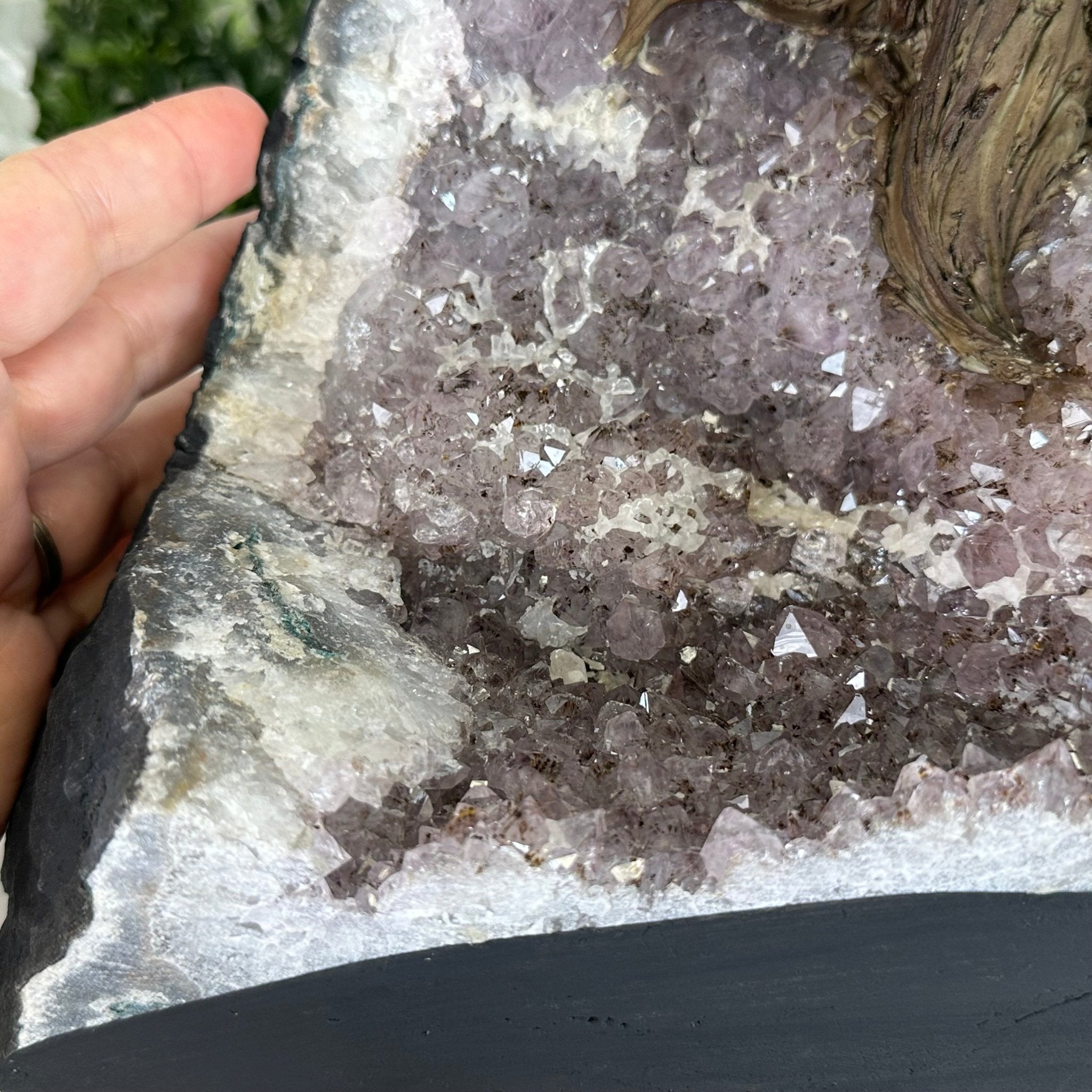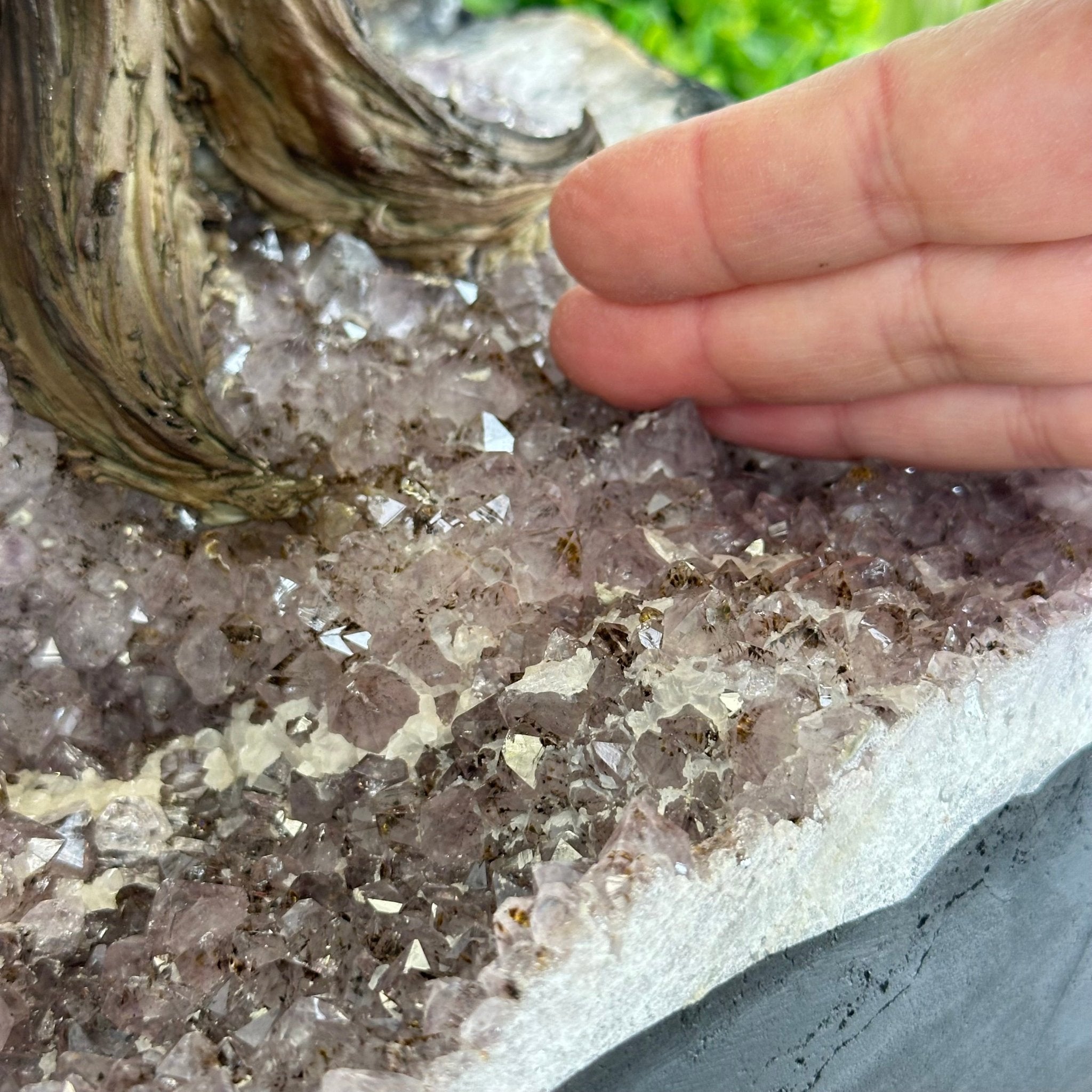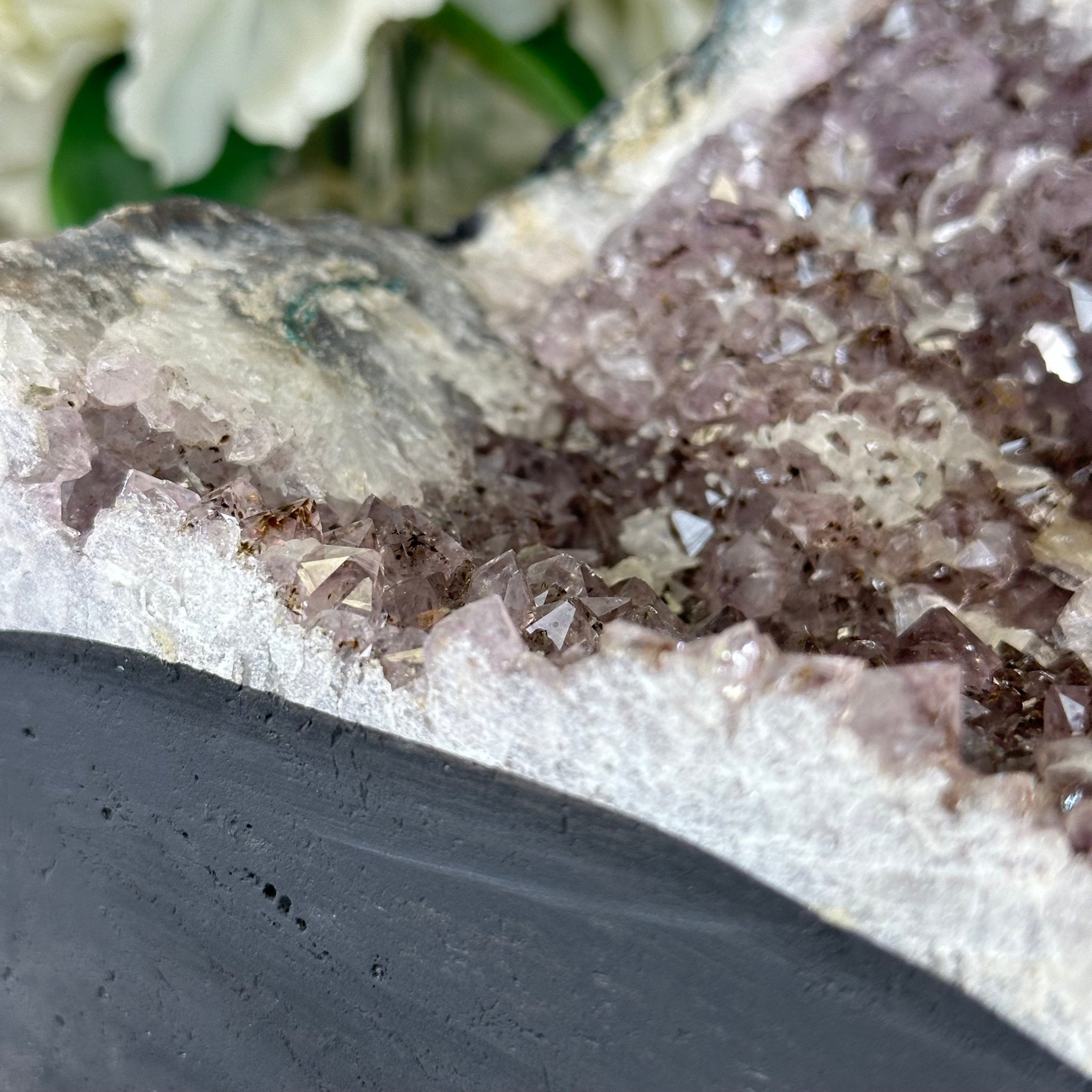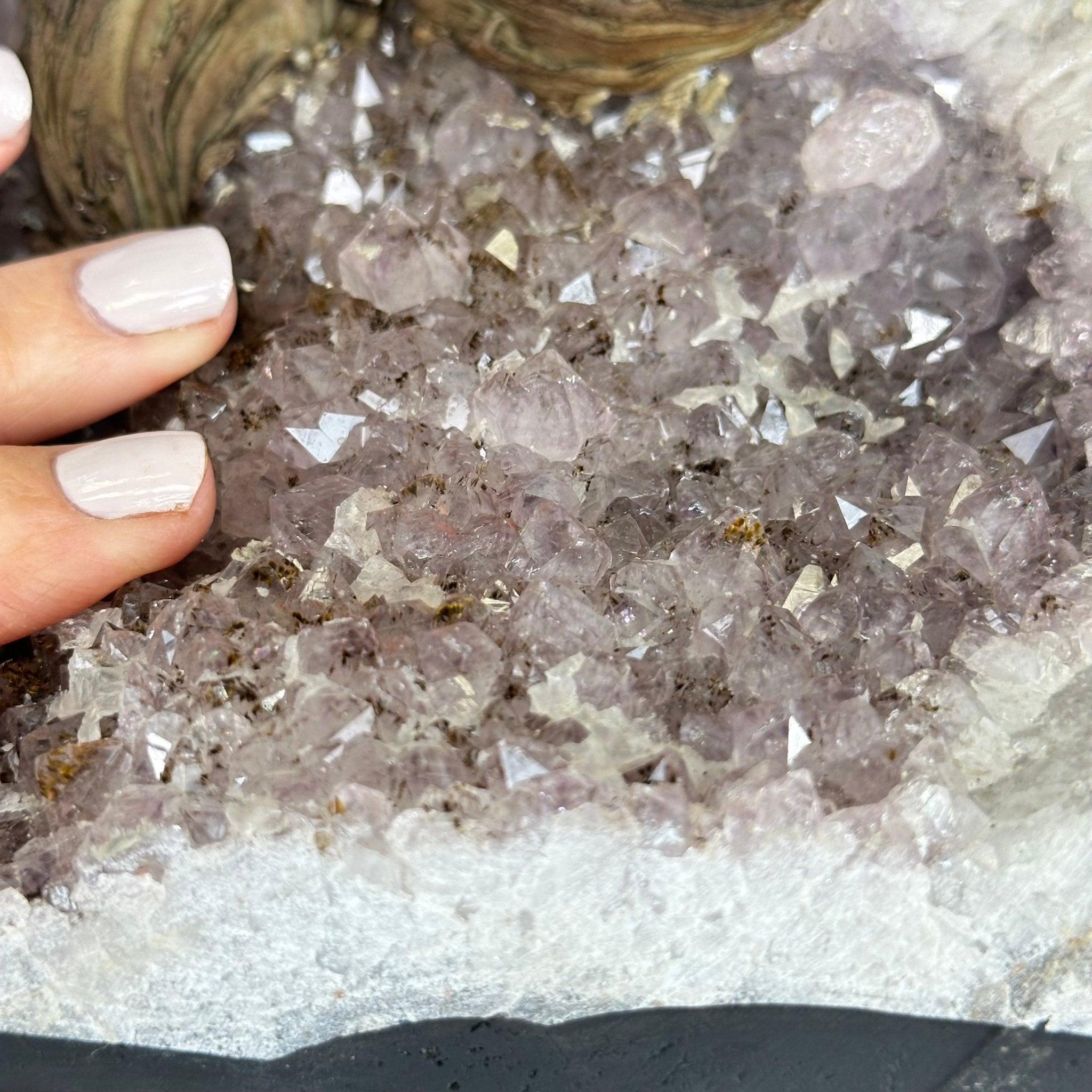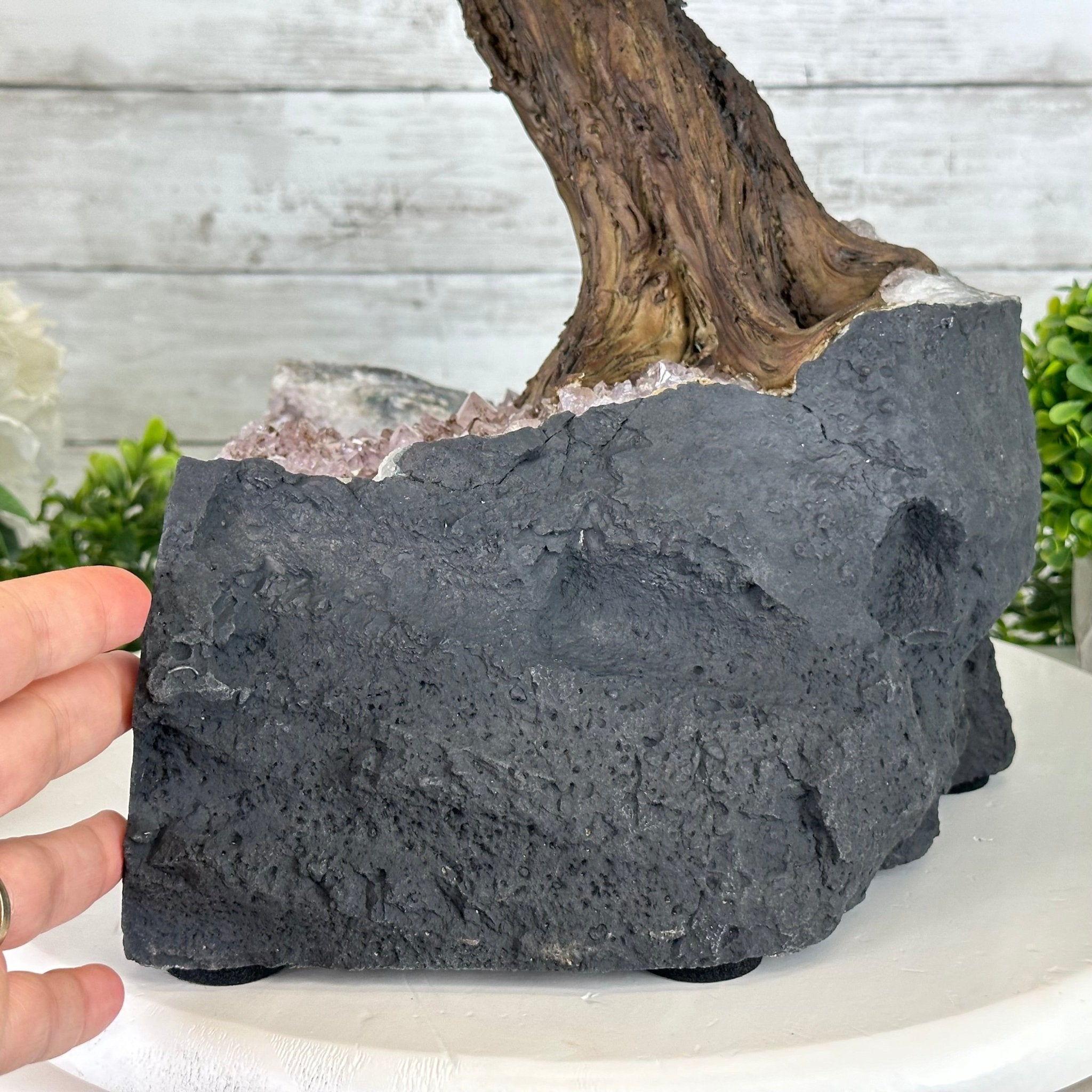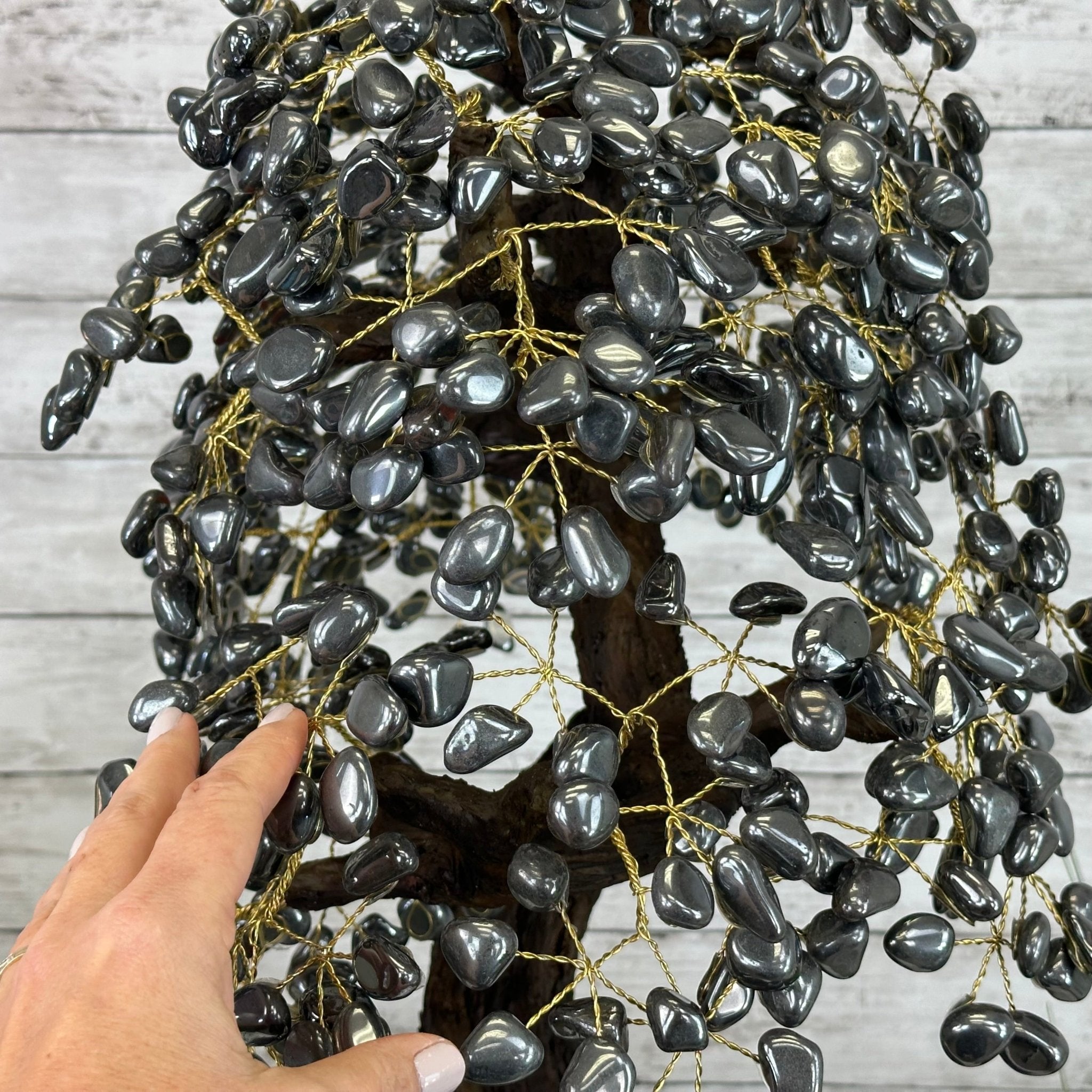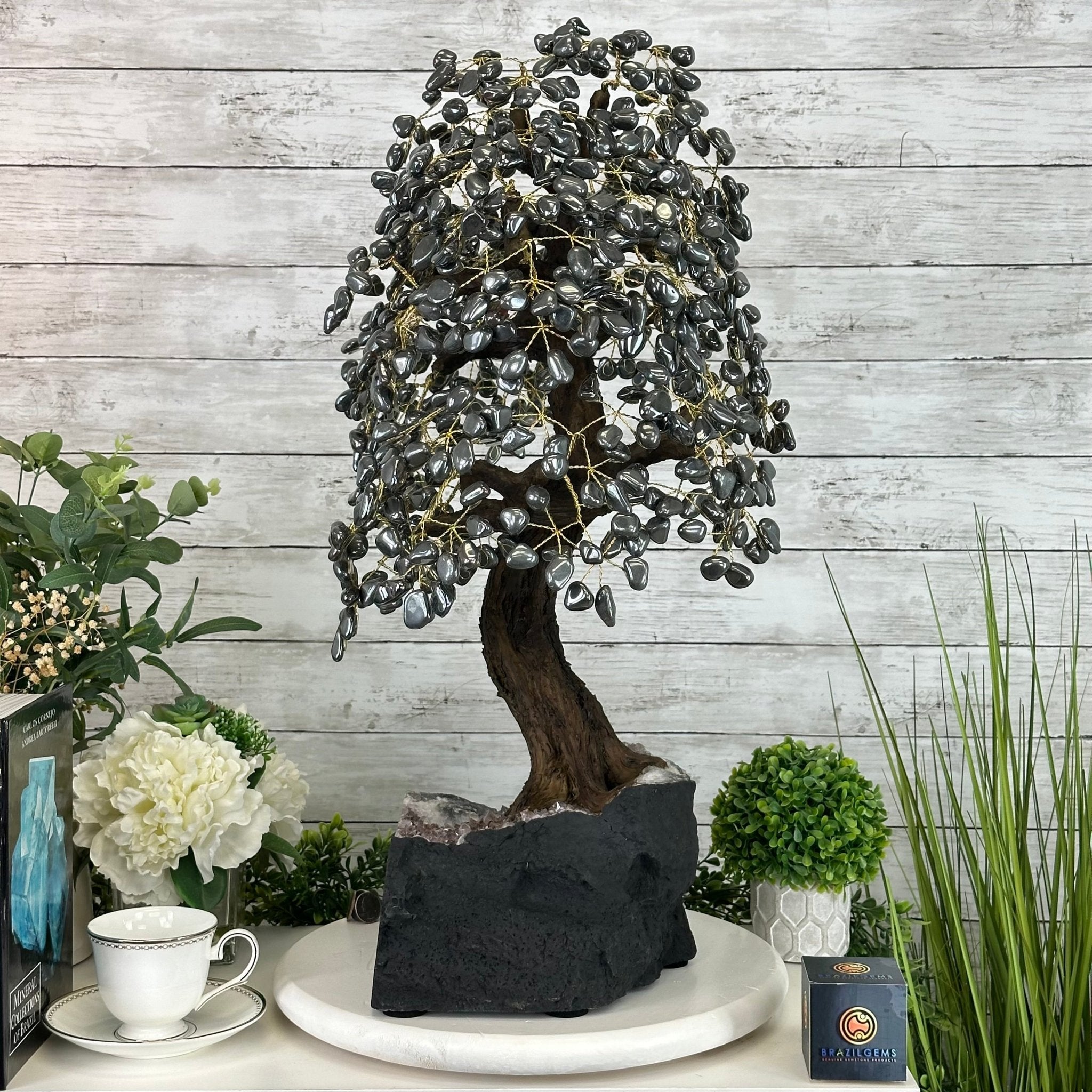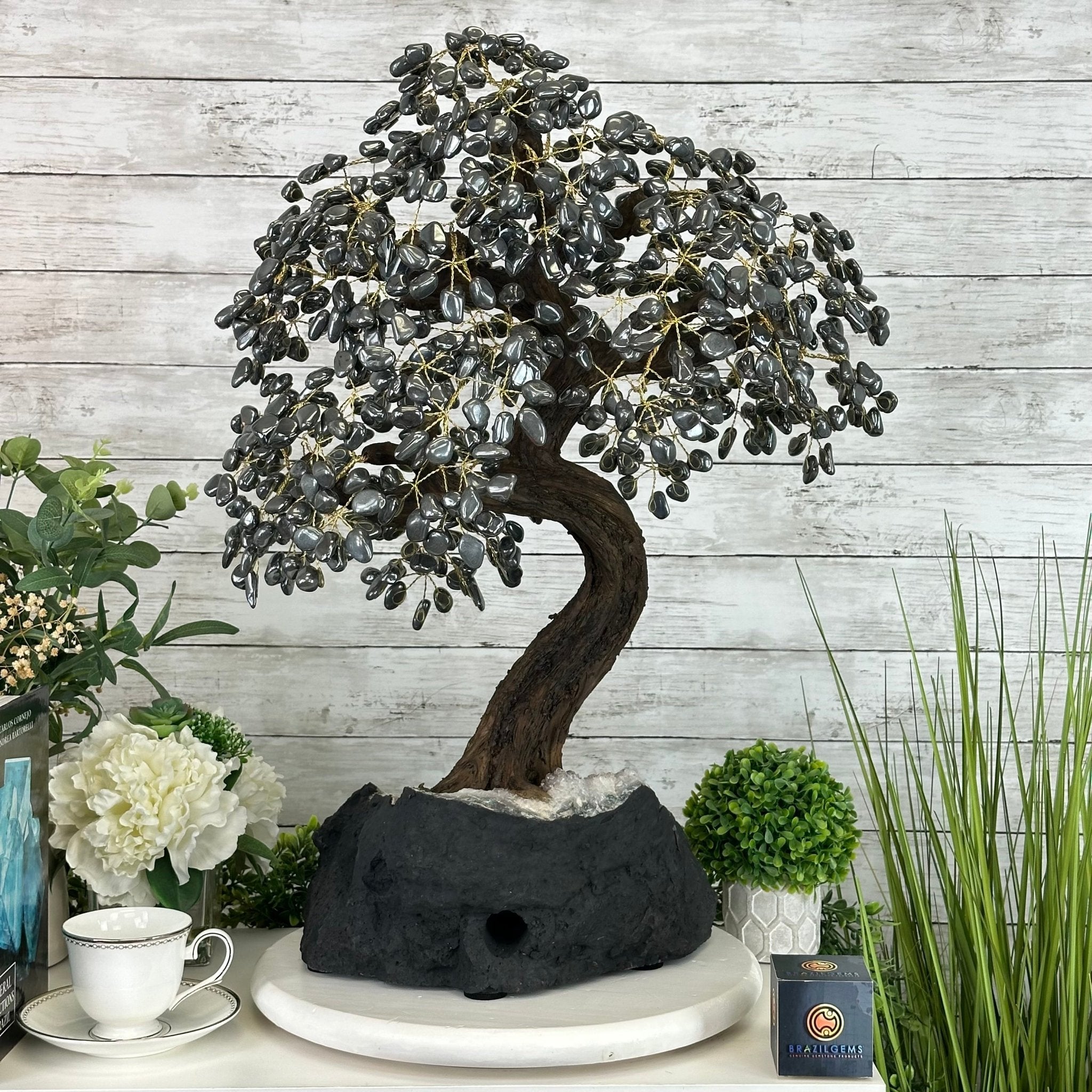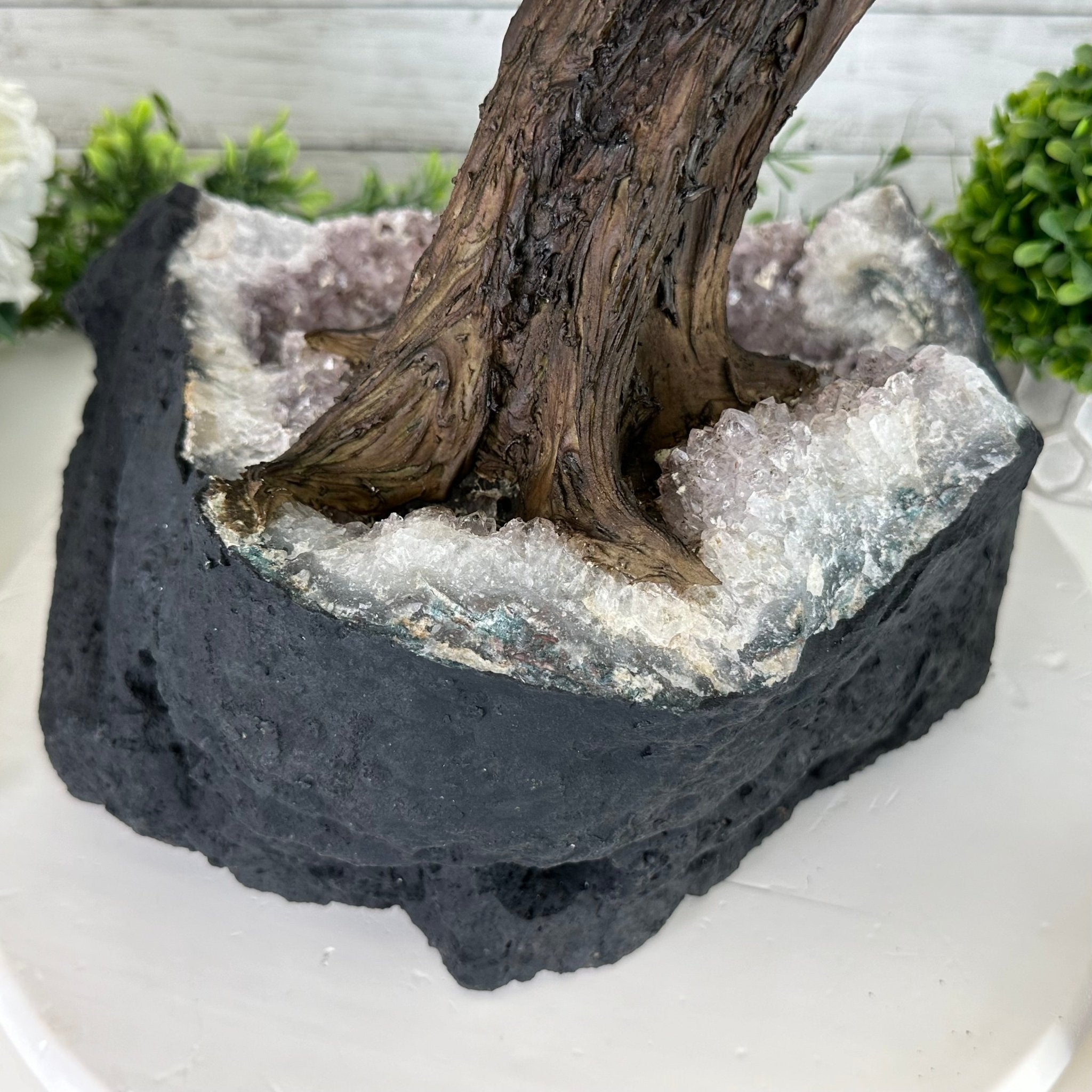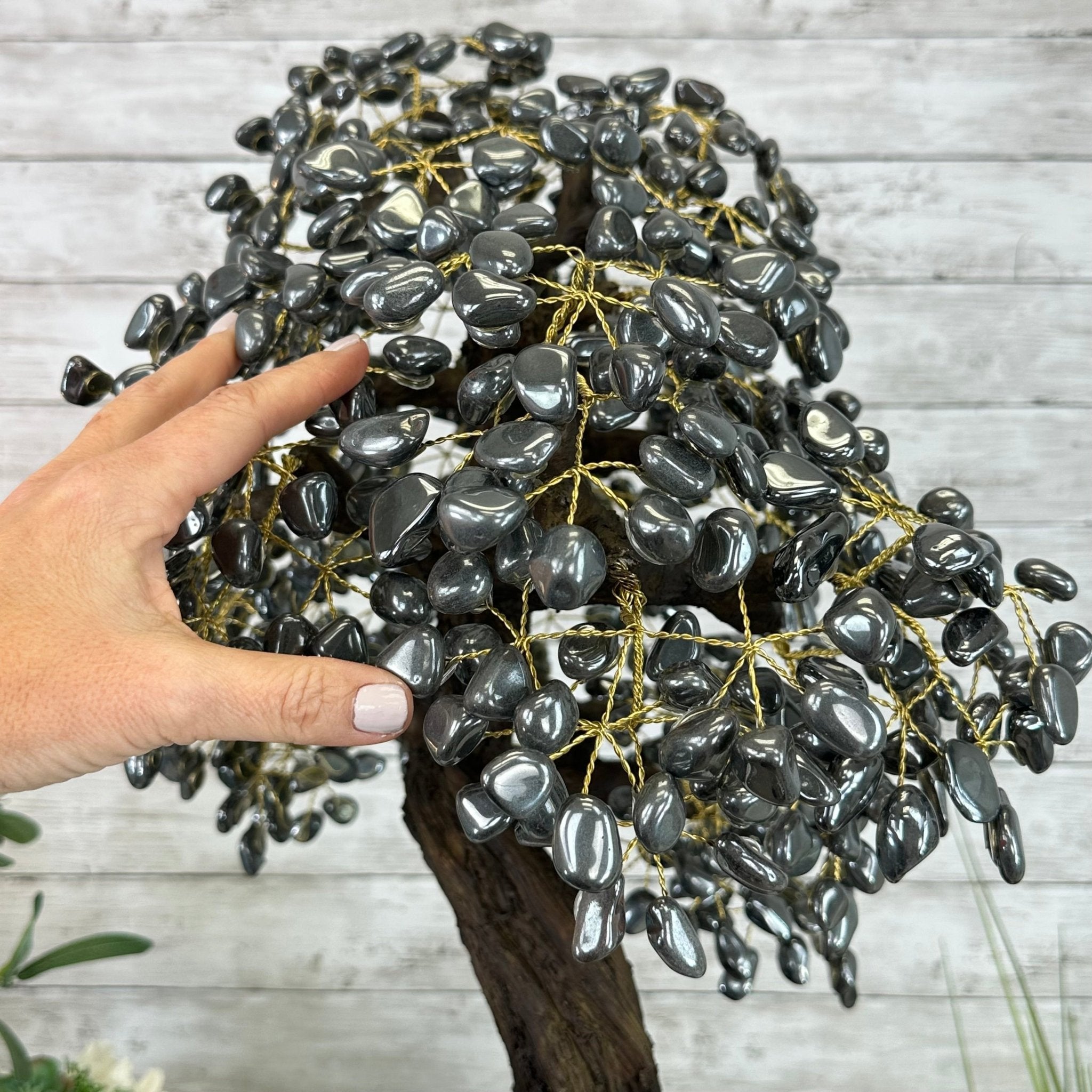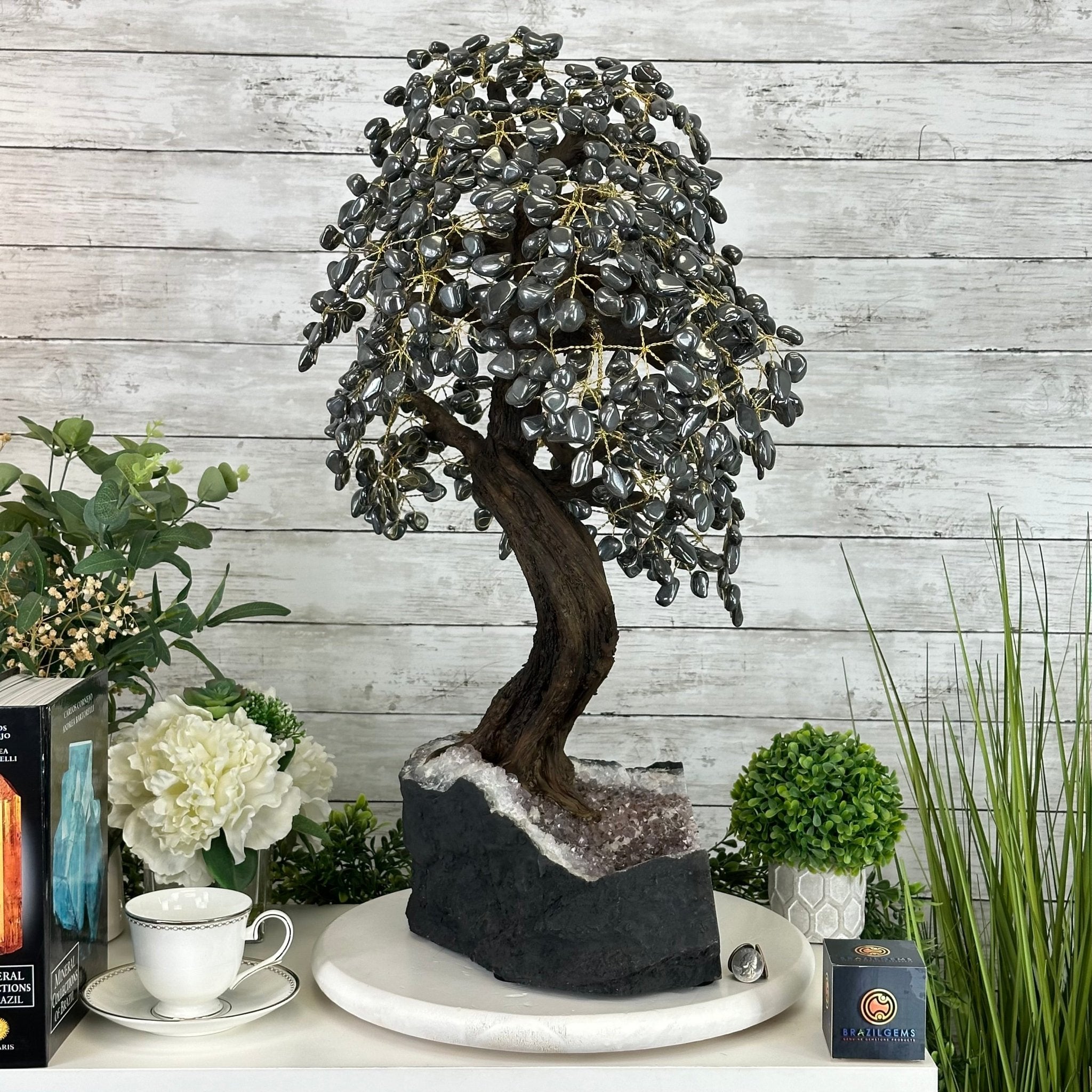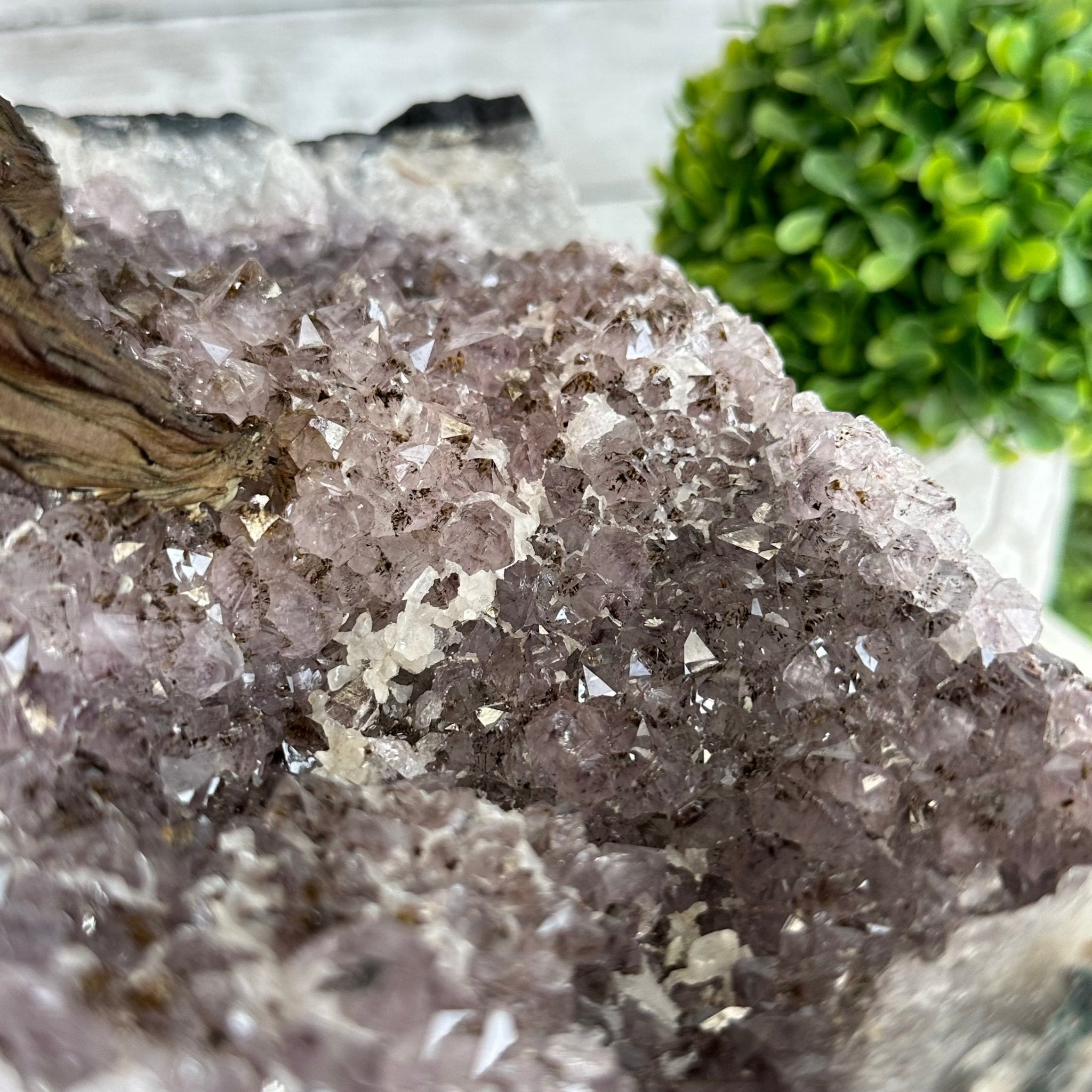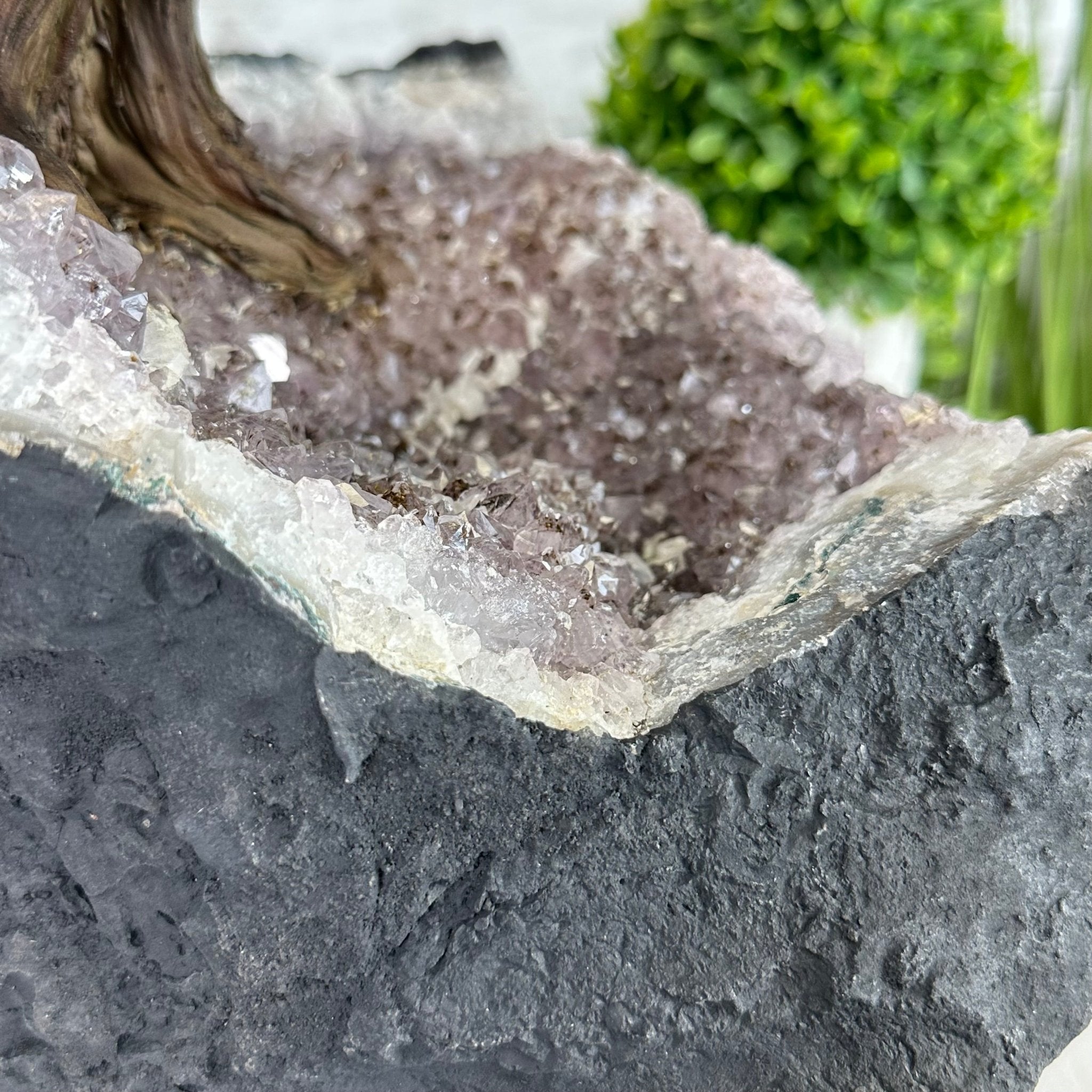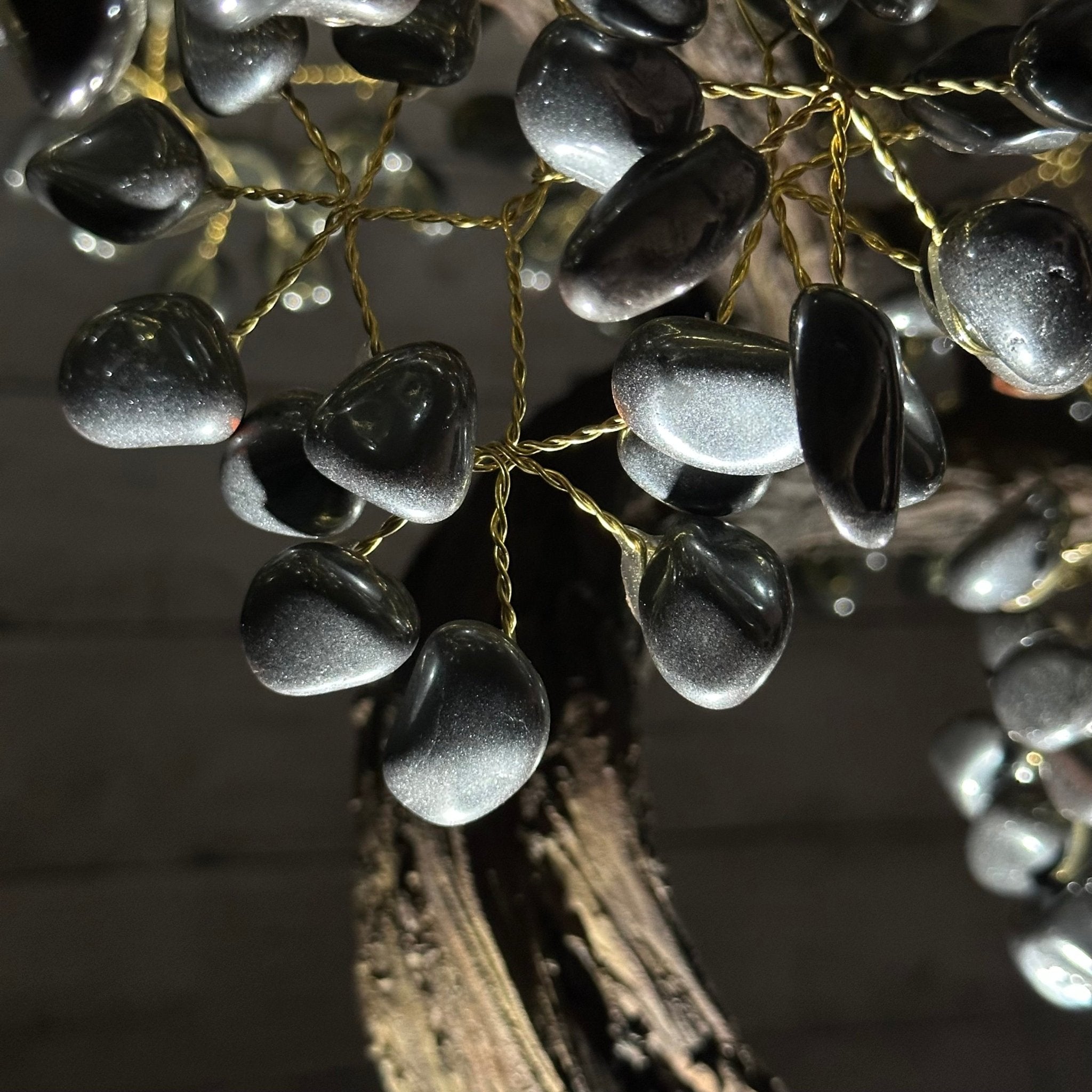Hematite Gemstone Products
Hematite is a metallic gray to black mineral with a high iron content, known for its distinctive luster and various industrial and ornamental uses. Here's a comprehensive definition:
Composition: It is an iron oxide mineral with the chemical formula Fe2O3. It is composed of iron and oxygen atoms arranged in a crystal lattice structure.
Color and Appearance: Typically exhibits a metallic luster and ranges in color from metallic gray to iron-black. Its surface may appear shiny, reflective, or dull, depending on its crystal structure and surface oxidation. Hematite often forms in botryoidal (grape-like), reniform (kidney-shaped), or tabular crystal habits.
Occurrence: Hematite is commonly found in sedimentary, metamorphic, and igneous rocks around the world. It occurs in environments where iron-rich minerals are concentrated and can be found in deposits such as banded iron formations, hydrothermal veins, and as concretions in sedimentary rocks.
Uses: Hematite has various industrial applications due to its high iron content. As a major ore of iron it's mined for the production of iron and steel. Additionally, hematite is used as a pigment in paints, coatings, and dyes due to its dark color and opacity. In jewelry and lapidary, hematite is popular for beads, cabochons, and carvings due to its metallic luster and striking appearance.
Metaphysical Properties: Energy - Balance - Confidence. Crystal healing believers find hematite to be a powerful aid to balance the energy of body, mind, and spirit. Some call it “the blood stone” and sometimes use it to boost circulation. Hematite could even cleanse negative energy, empower confidence, and bring the owner equanimity in facing life’s challenges. Empaths and highly sensitive people may find relief in the presence of hematite.
HEMATITE
Hematite is a striking gemstone known for its smooth, metallic sheen and rich gray-black tones. Its reflective surface adds a bold, elegant touch to both modern and traditional spaces. Brazil Gems® offers a carefully curated selection of Hematite pieces that combine beauty with expert craftsmanship.

